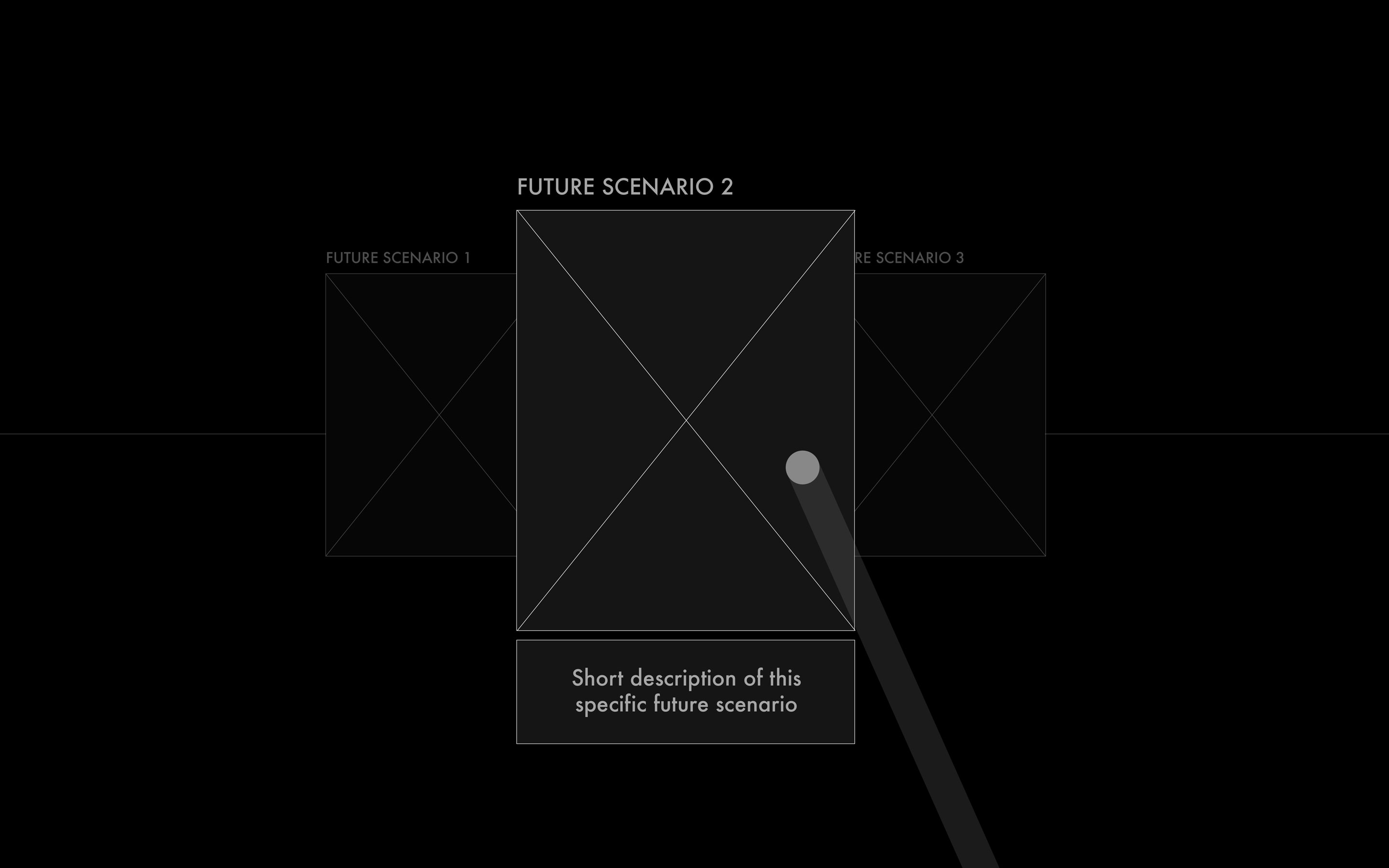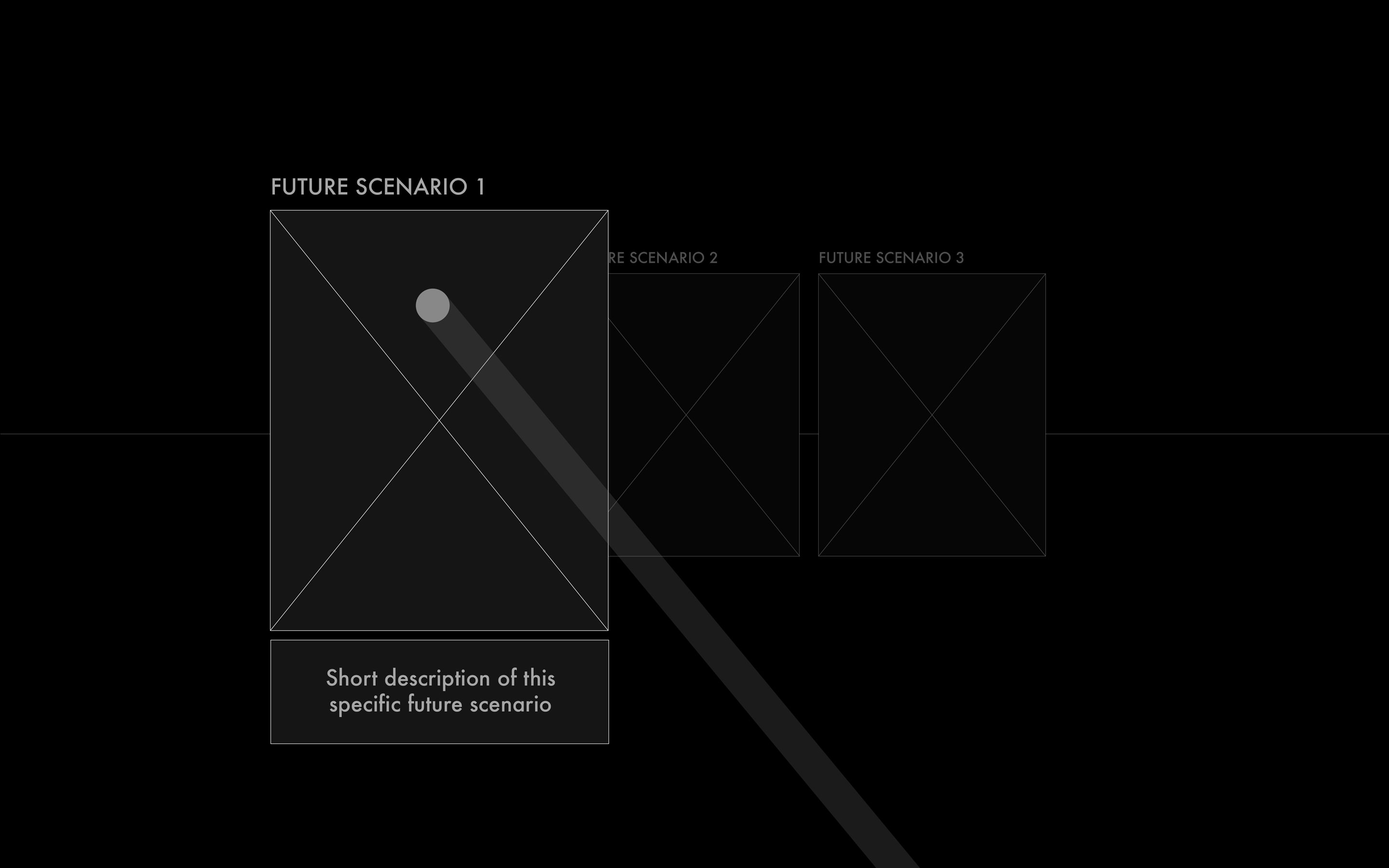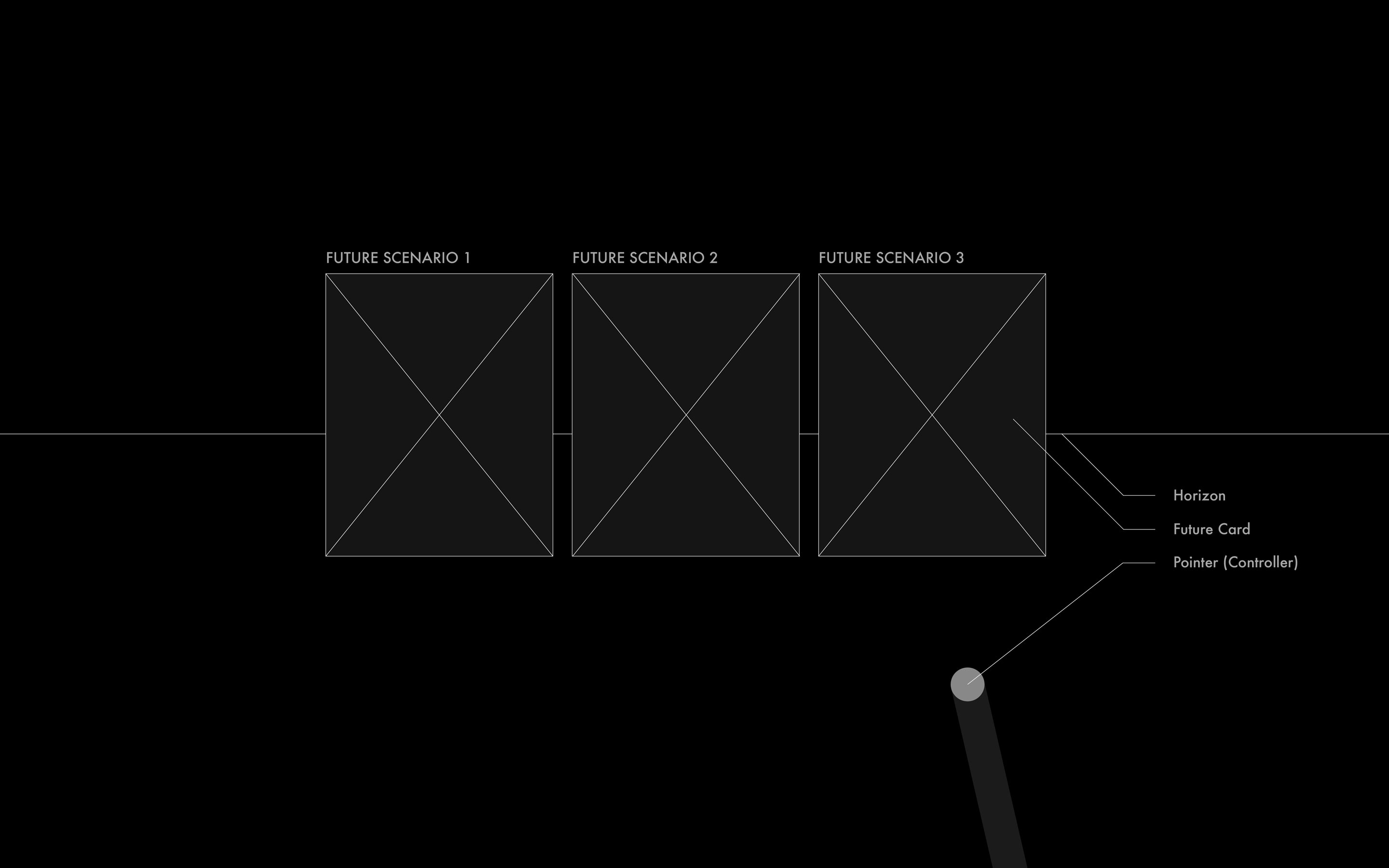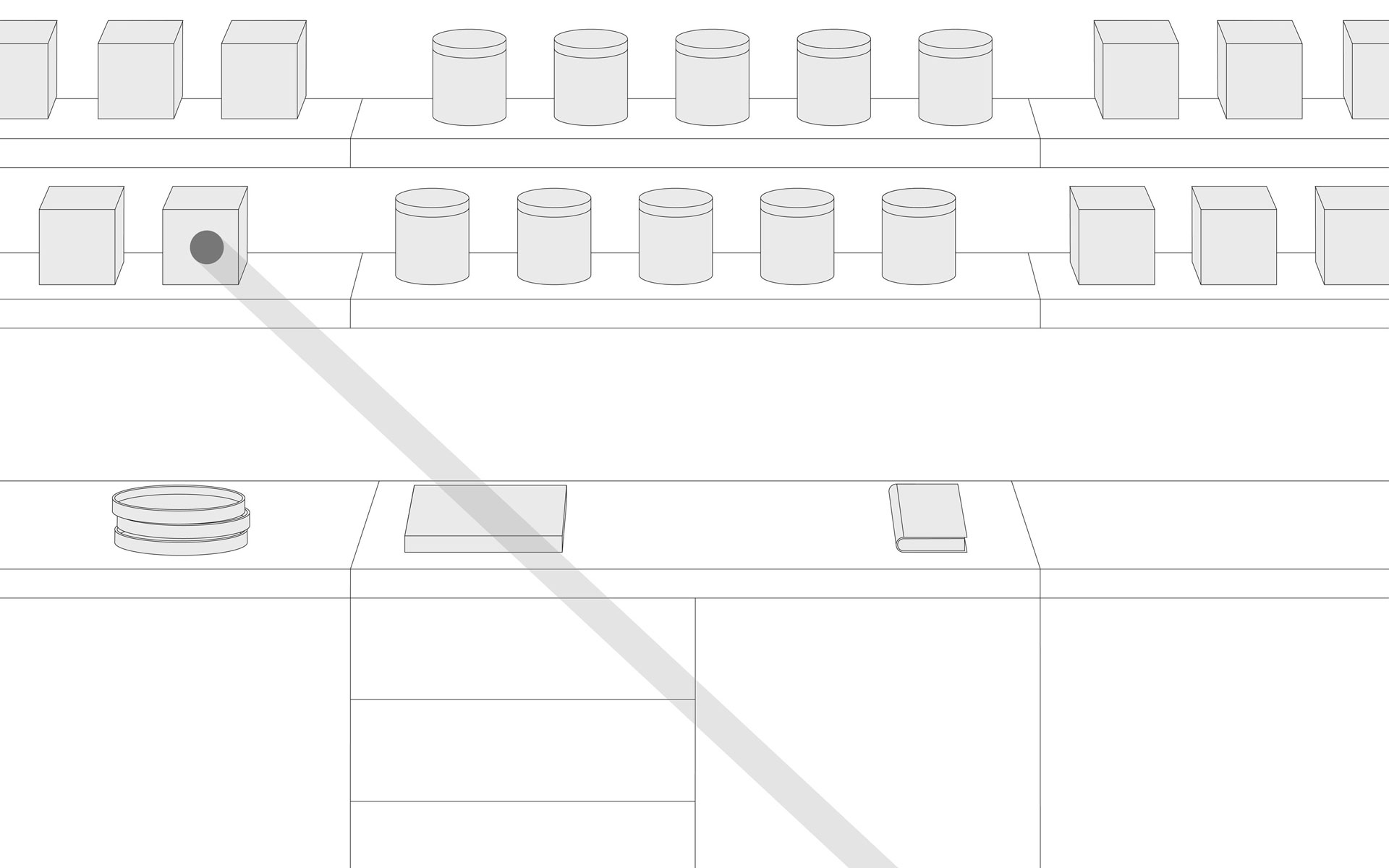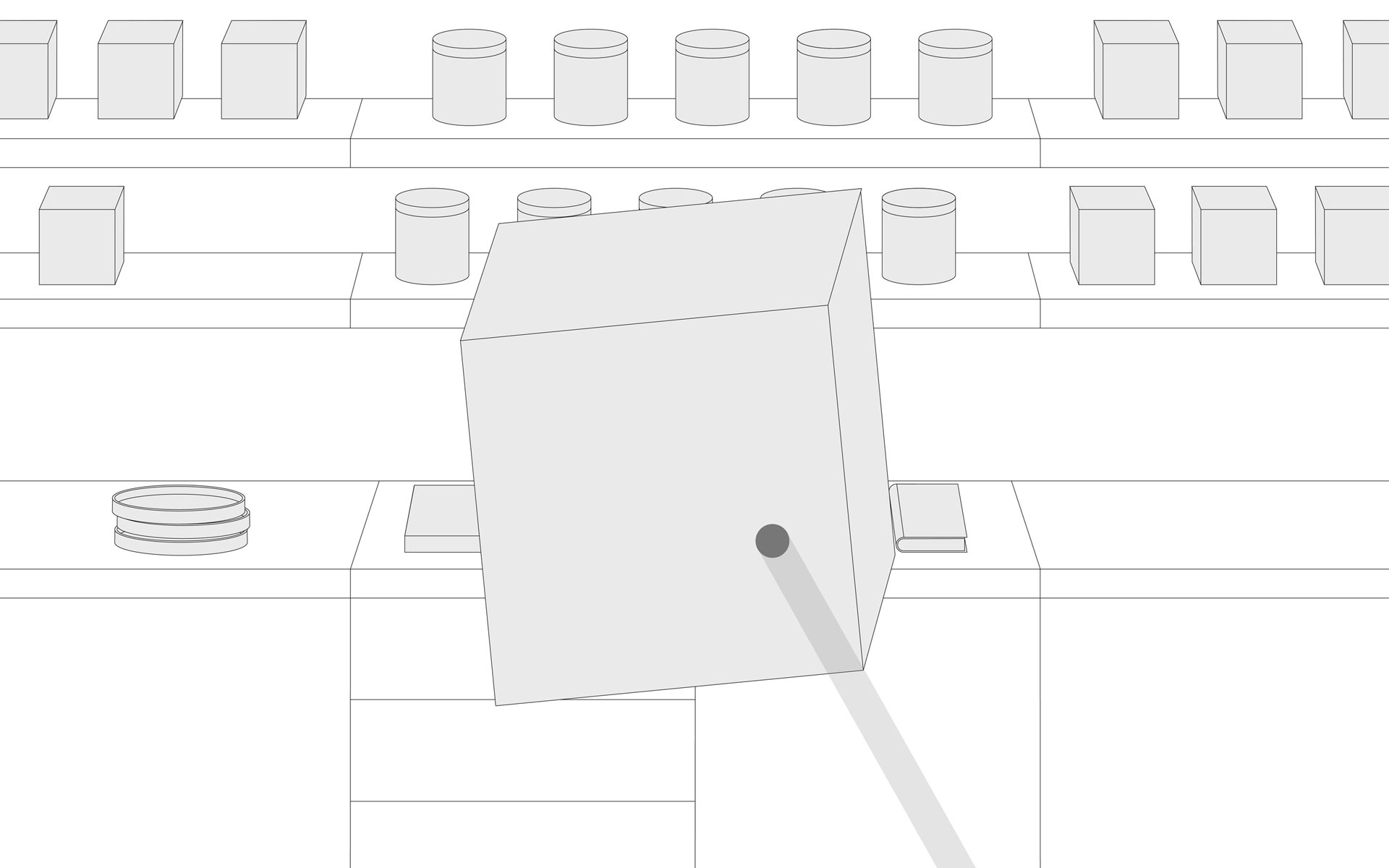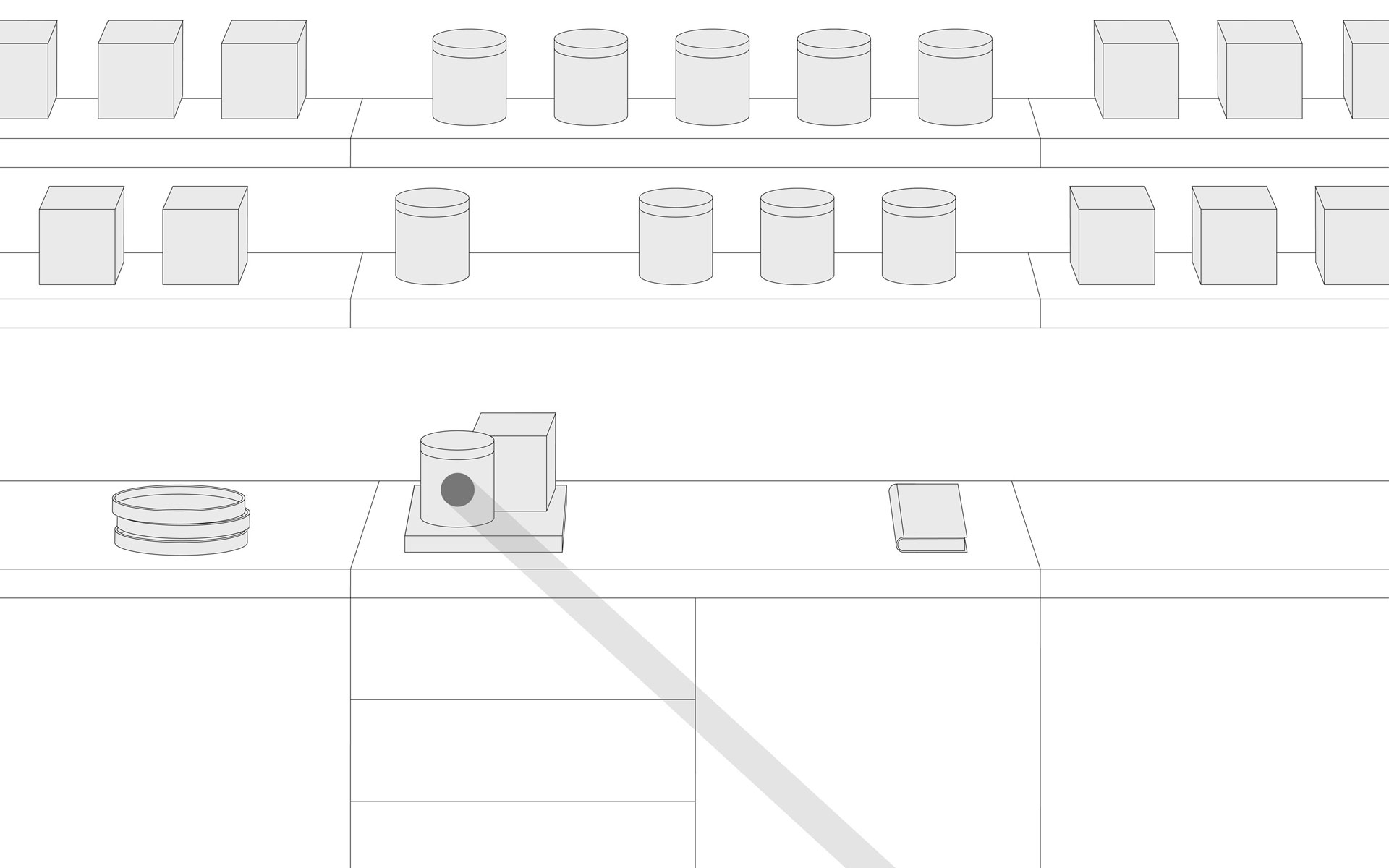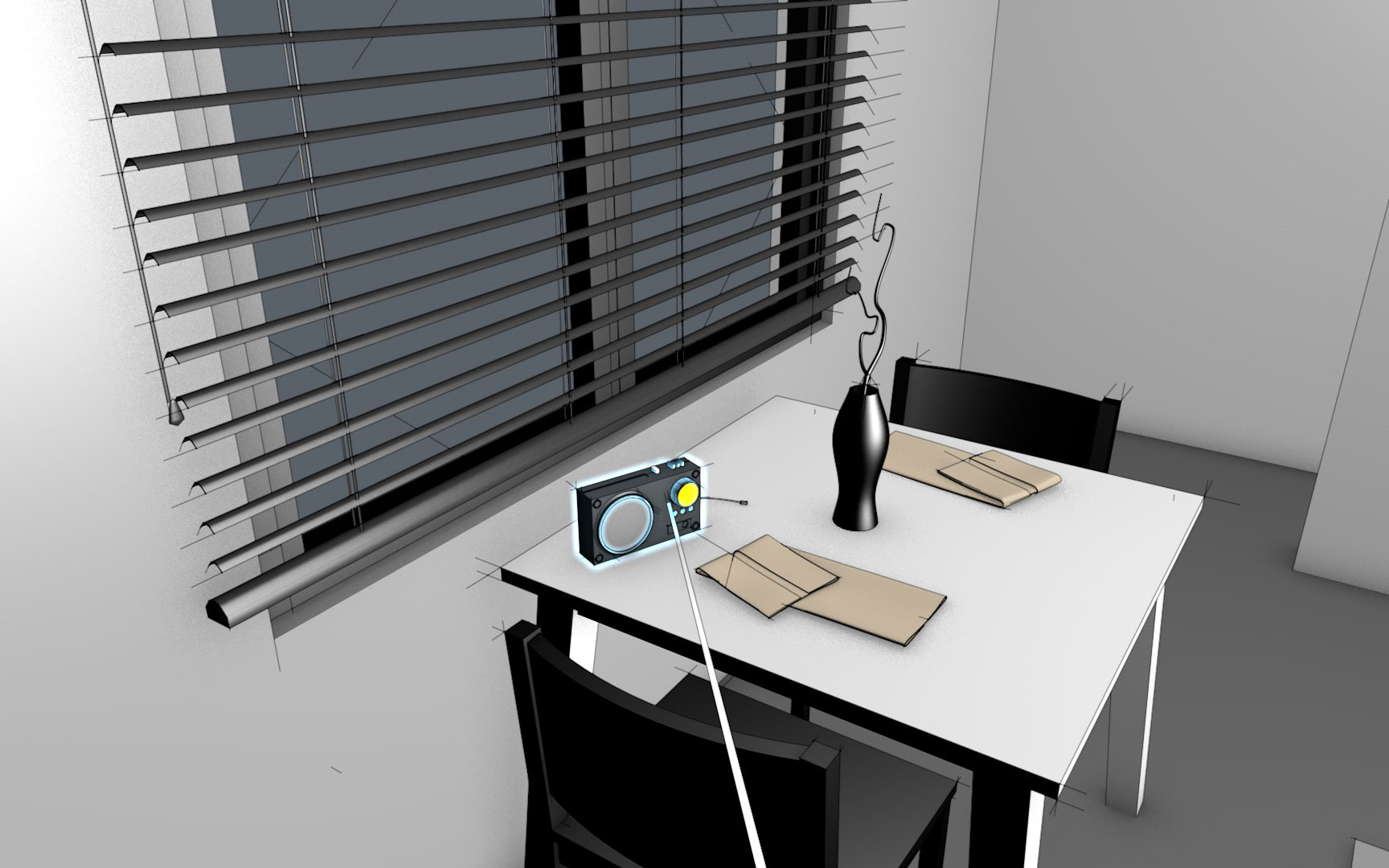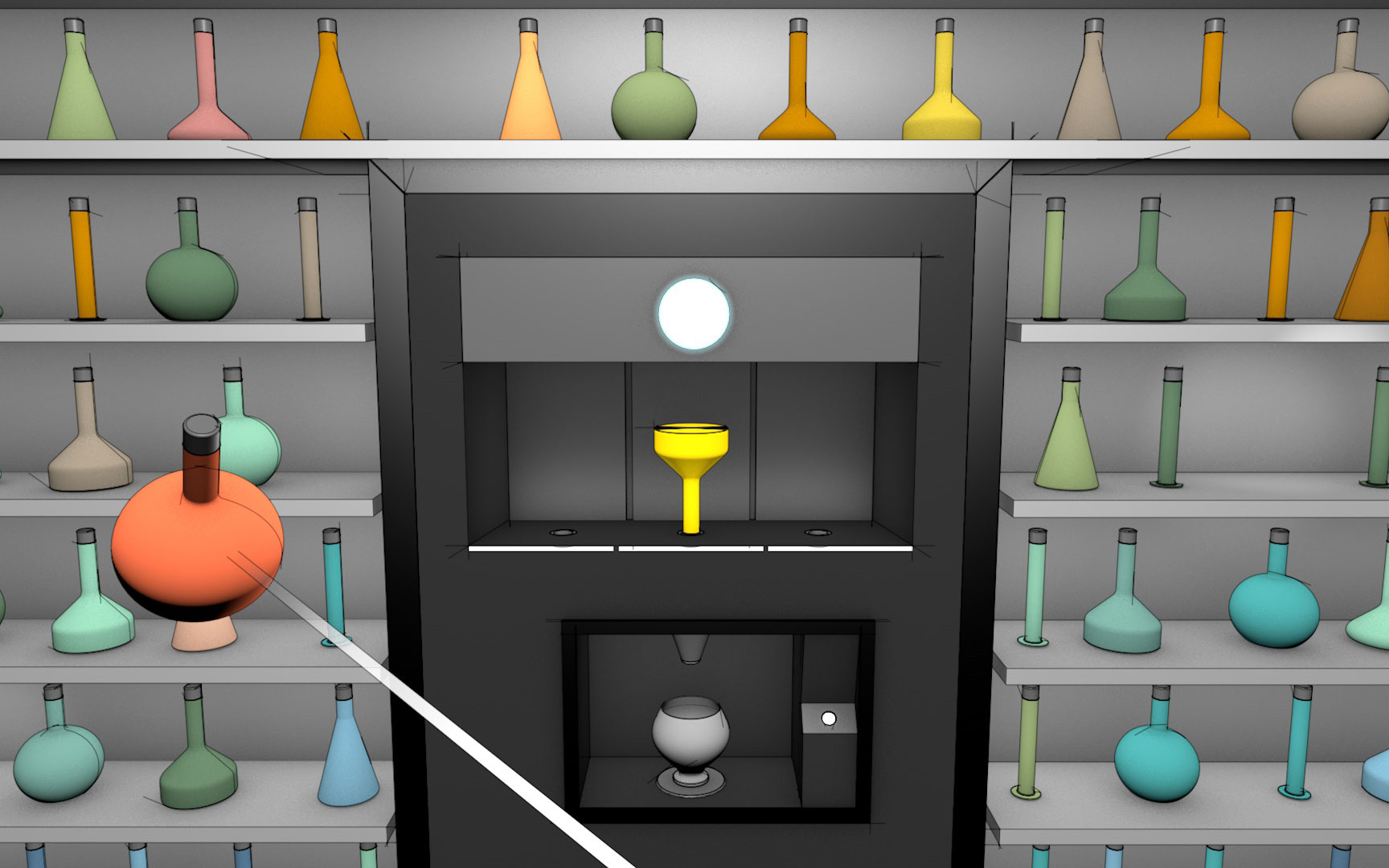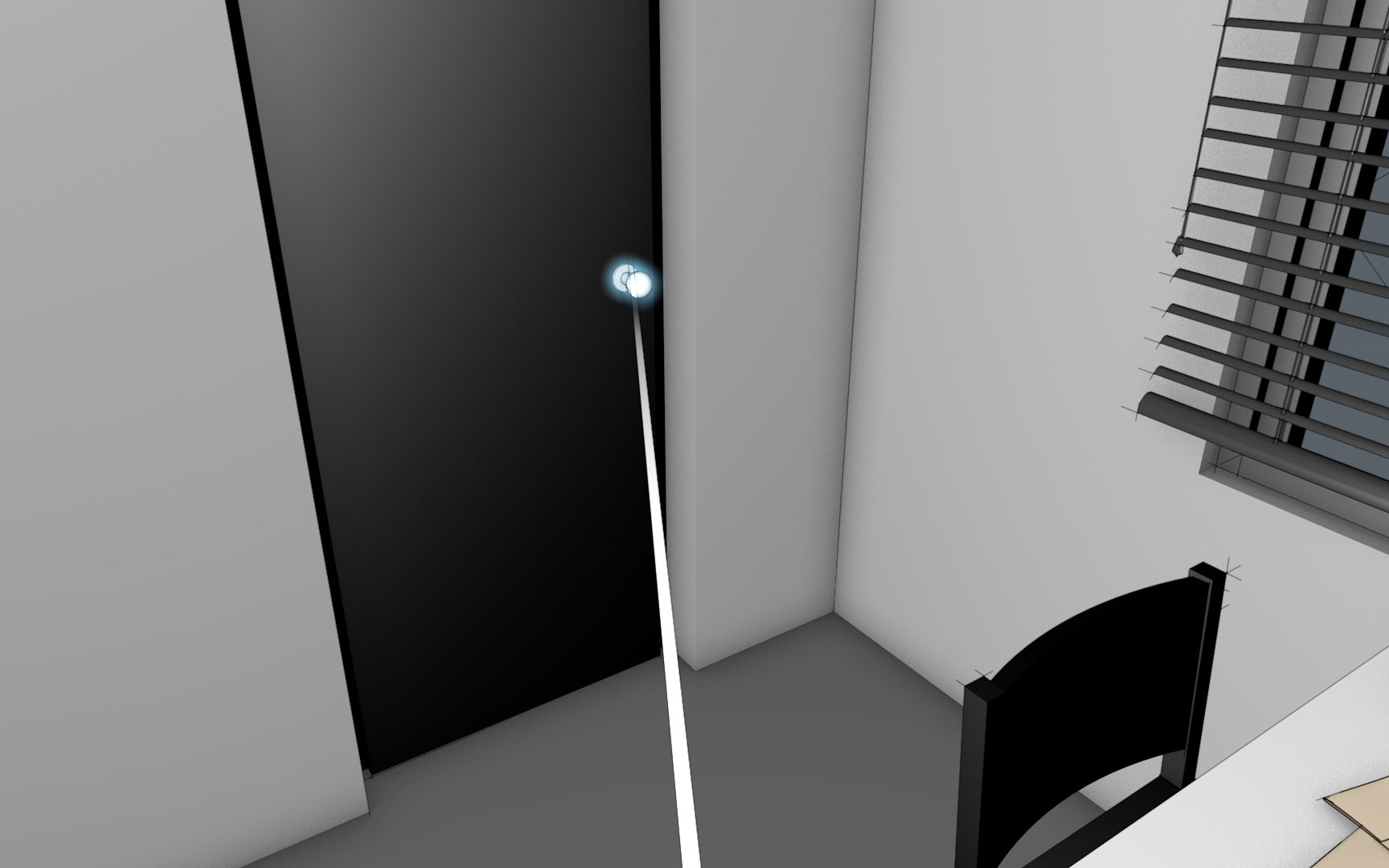FUTURIUM VR
The Museum of the Future
Futurium VR is a virtual reality museum experience that fosters conversations about futures.
Team
With Corine Britto, Ema Karavdic, and Ulu Mills
Time
6 weeks in 2018
Role
Design Research, Conceptual Design, 2D/3D/360° Prototyping, Interaction Design
Tools
Cinema 4D, After Effects, Illustrator, Oculus Go
How might VR enhance, but not replace a physical museum experience?
Project Objectives
Museums play an important role in society, as illustrated by the Smithsonian’s vision "to engage and to inspire more people, where they are, with greater impact, while catalyzing critical conversation on issues affecting our nation and the world.” Today, many museums are also facing the challenge of transitioning from rigid institutions to experiential and flexible spaces. This is driven by such factors as expanding collections, increased competition for visitors, and visitor expectations for greater engagement. Over the past few years, a number of institutions have experimented with virtual reality in a variety of exhibition settings.
Affordances
What is the role of affordances in virtual environments?
Personalization
How can visitors personalize their experience?
Collaboration
Can a VR museum provide a shared, collaborative experience?
Museum Identities
How might VR inform or influence the identities of museums?
Exploratory Research
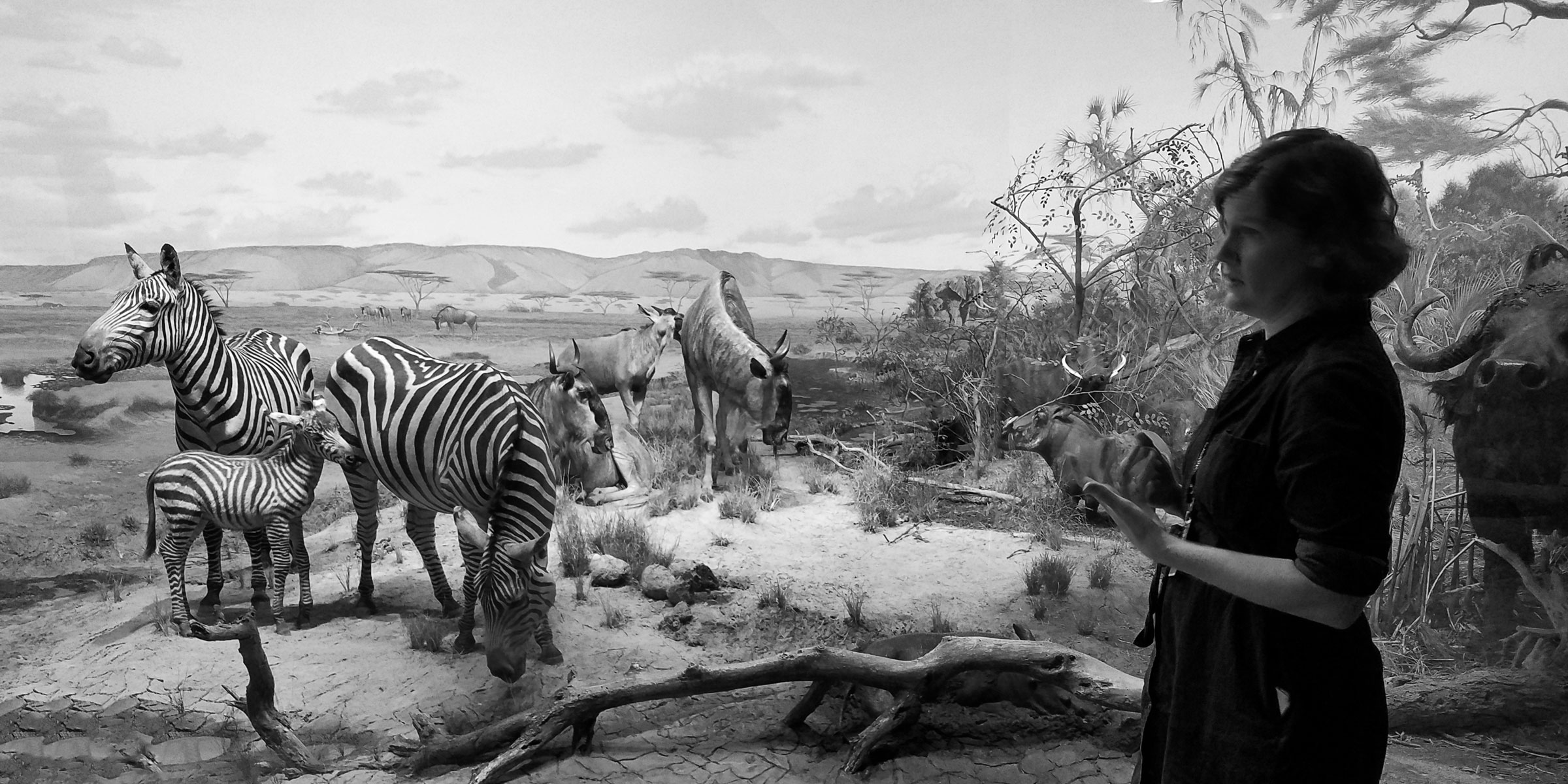

Onsite Research
Our research started with a visit to the Carnegie Museum of Natural History. The goal was to connect with Rebecca Shreckengast, Director of Exhibition Experience and CMU alumna. She enlightened us about the current state of museum exhibition design, and gave us invaluable insights from her perspective as an experienced museum curator and exhibition designer.
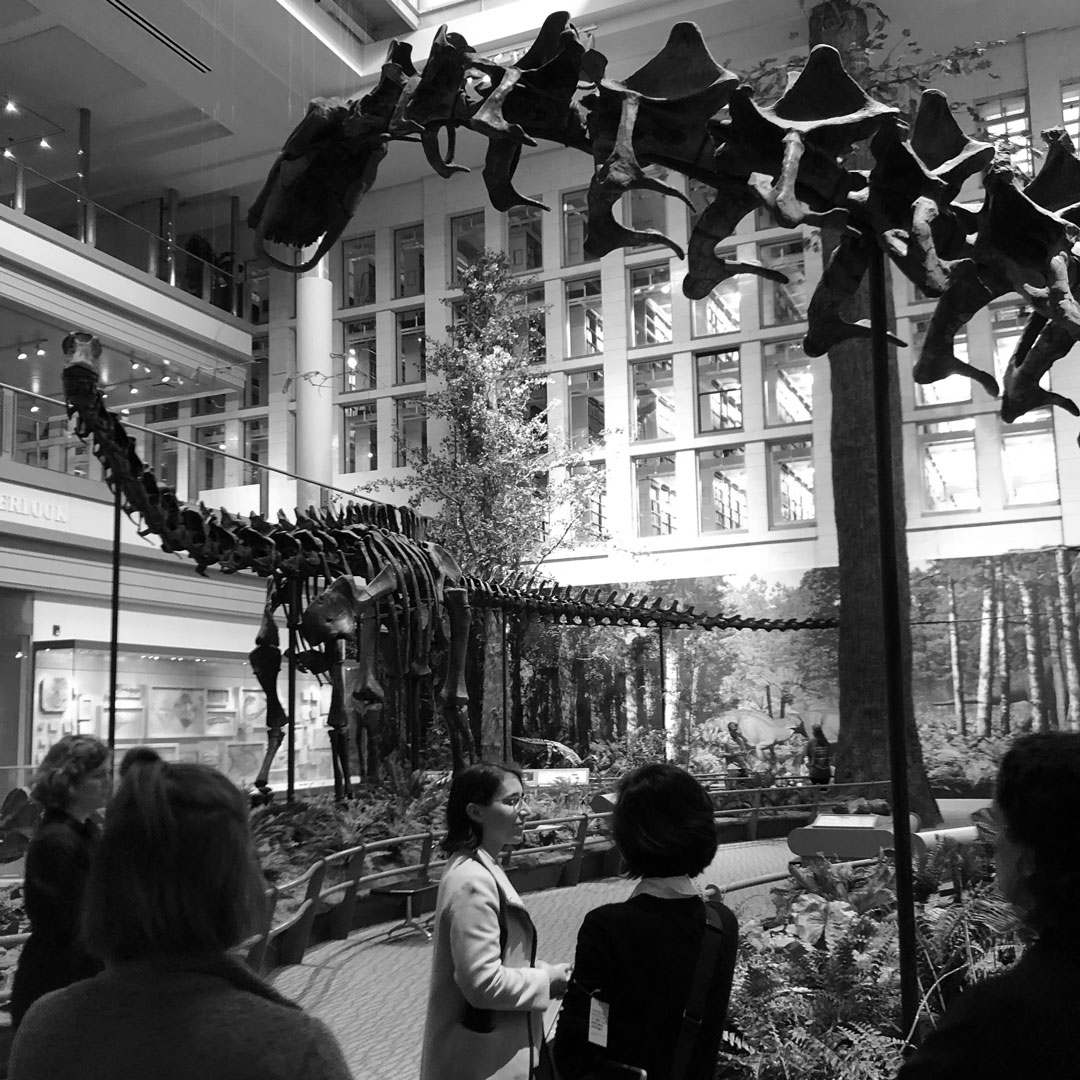

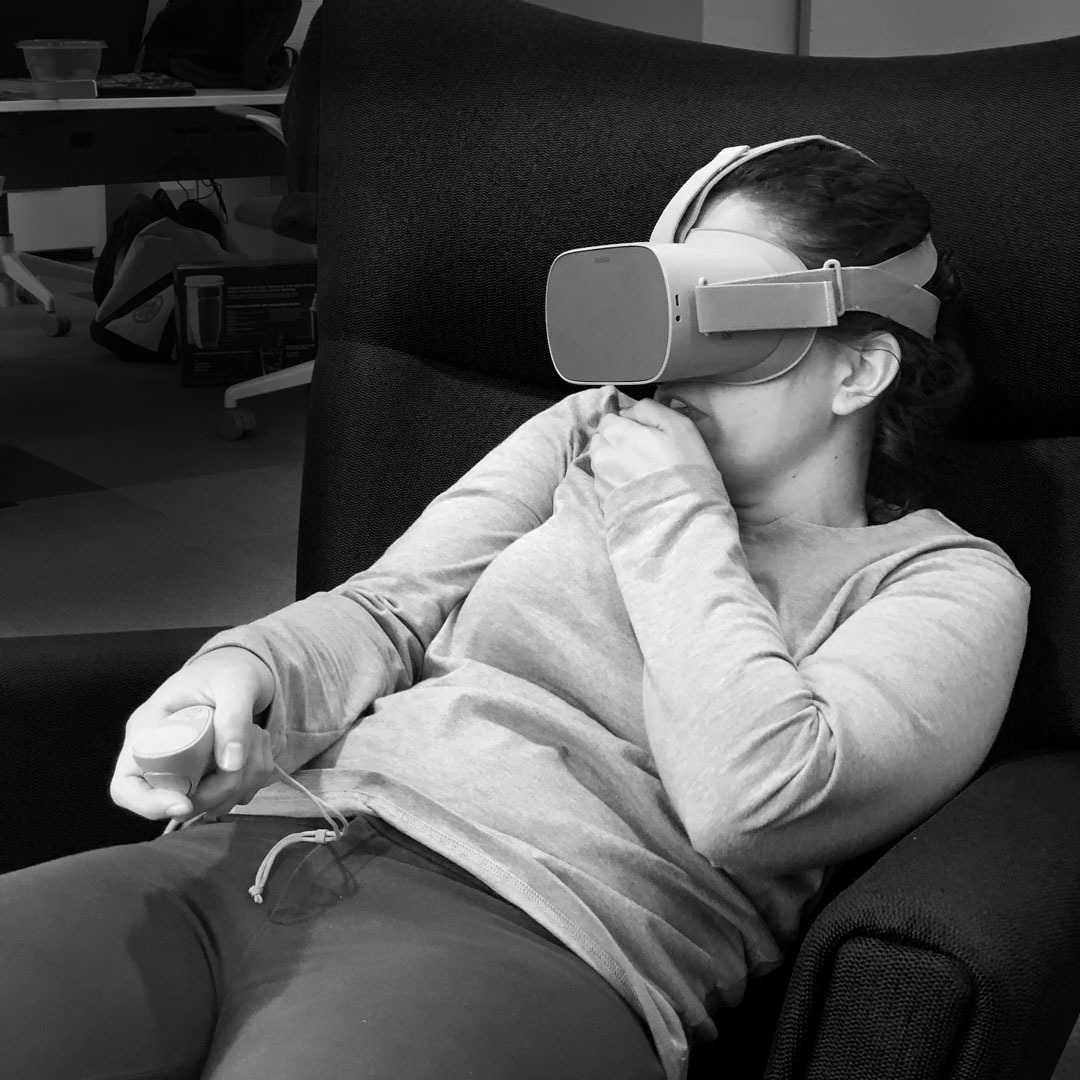

Platform Affordances and Competitive Analysis
Alongside the museum research, we began experimenting with the Oculus Go headset. We started researching interaction paradigms in VR by examining relevant experiences in many different contexts: games, interactive movies, and existing museum exhibits, learning applications and information visualizations.
Research Synthesis and Opportunities
In our research we discovered four main opportunities:
1
Museums are effective and familiar discussion and reflection spaces
3
VR allows experiences of impossible perspectives and environments
2
Physical exhibitions enable co-experiential museum visits
4
Digital environments allow the placement of interactive museum artifacts in specific contexts
A VR Museum for Experiential Futures
Concept Generation
Situating the Brief
We had the option of creating a standalone, brand new virtual reality museum, or situating it in the context of an existing museum. After considering what each opportunity afforded, we chose the latter. We decided to develop our VR experience for the Futurium. A futures museum that is expected to open in Berlin in late 2019.
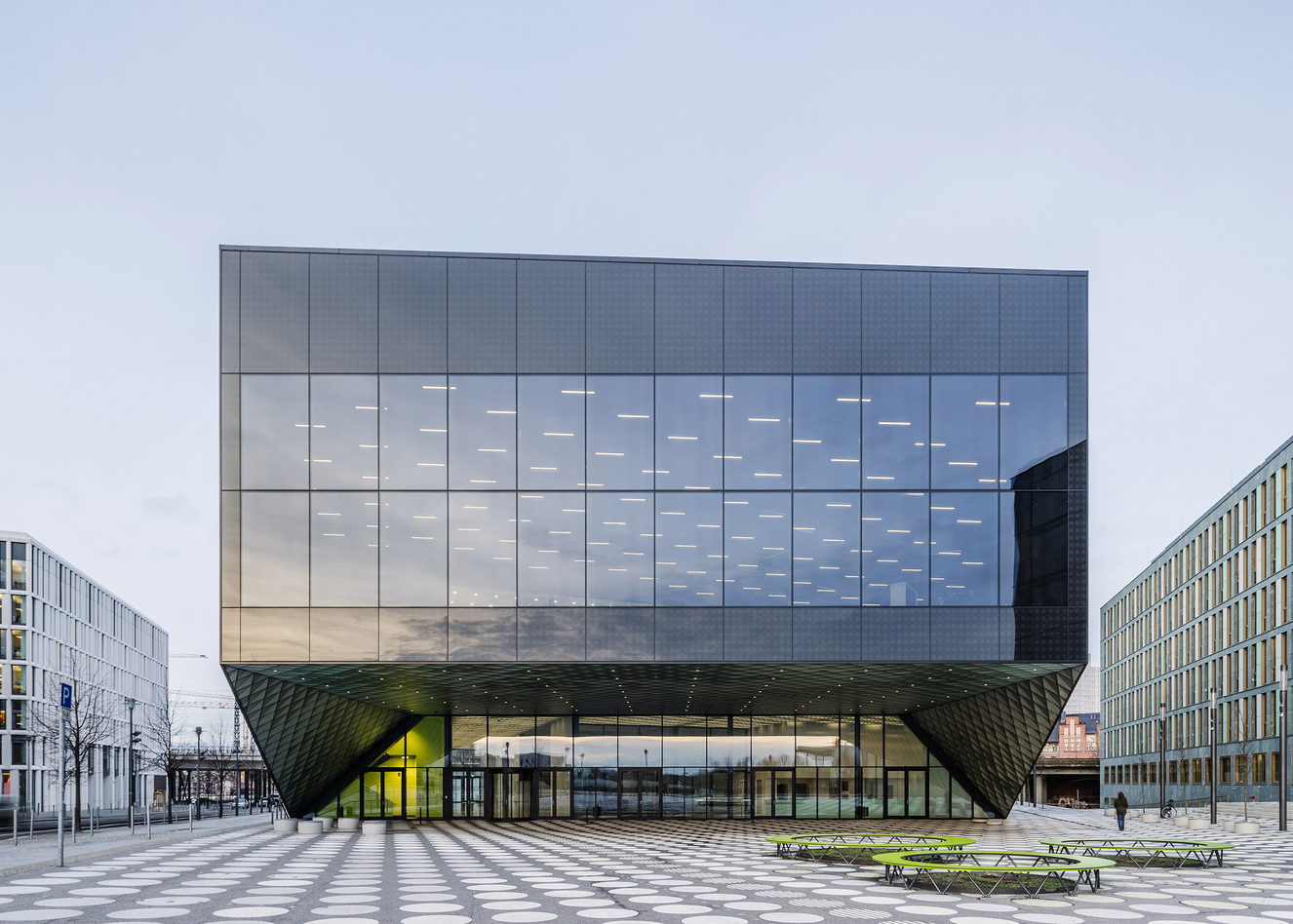

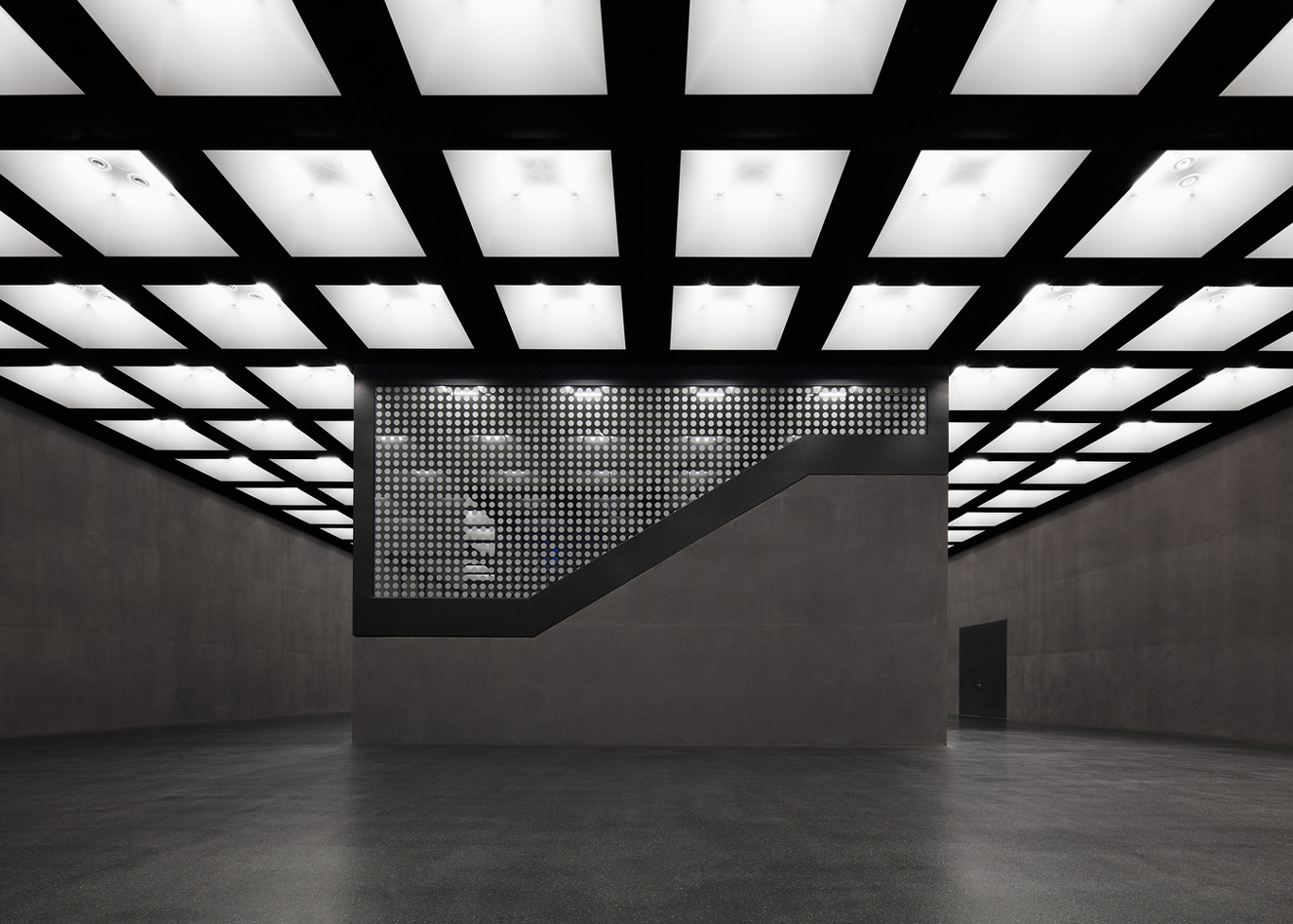

Futurium — House of Futures
Framing our Goals
After completing our research, we spent a session placing constraints on our solution using semantic differentials.


Concept Validation
Our framing helped us significantly in narrowing down the type of virtual reality museum experience we wanted to develop. We generated several rough concepts that considered our subgoals and ultimately decided to focus on a new way of experiencing different futures. Near the halfway point of our timeline, we had the opportunity to present a draft of our concept. For the sake of this deliverable, we presented a draft narrative focused around the future of work. However, we hadn’t quite figured out our workflow, and found the narrative to be too lean to produce artifacts that conveyed our concept properly. The feedback we received indicated a need to pivot.
This was a moment of reckoning as we considered the viability of our concept. We decided to reset our narrative, and develop a storyline that afforded a robust variety of multi sensory interactions.
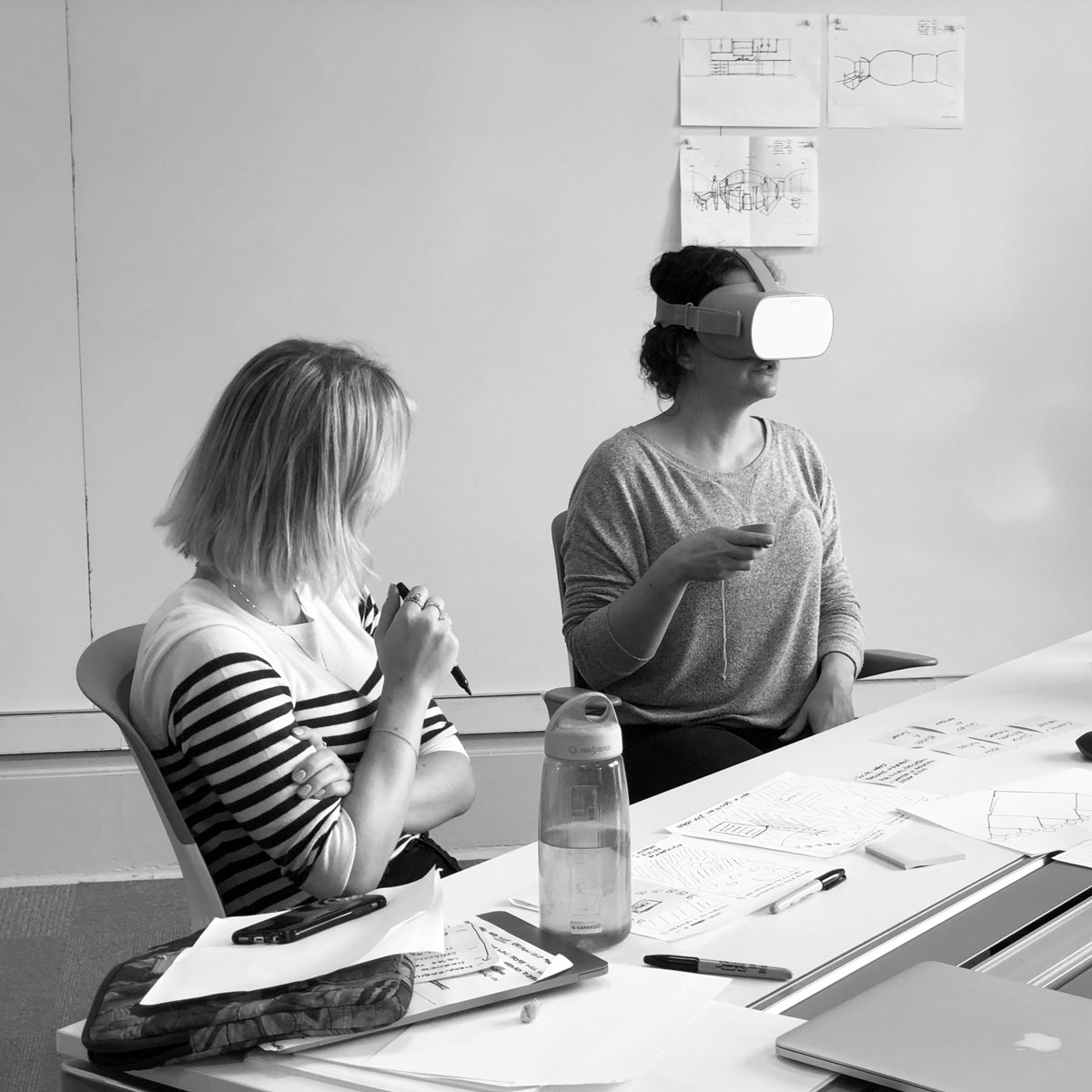

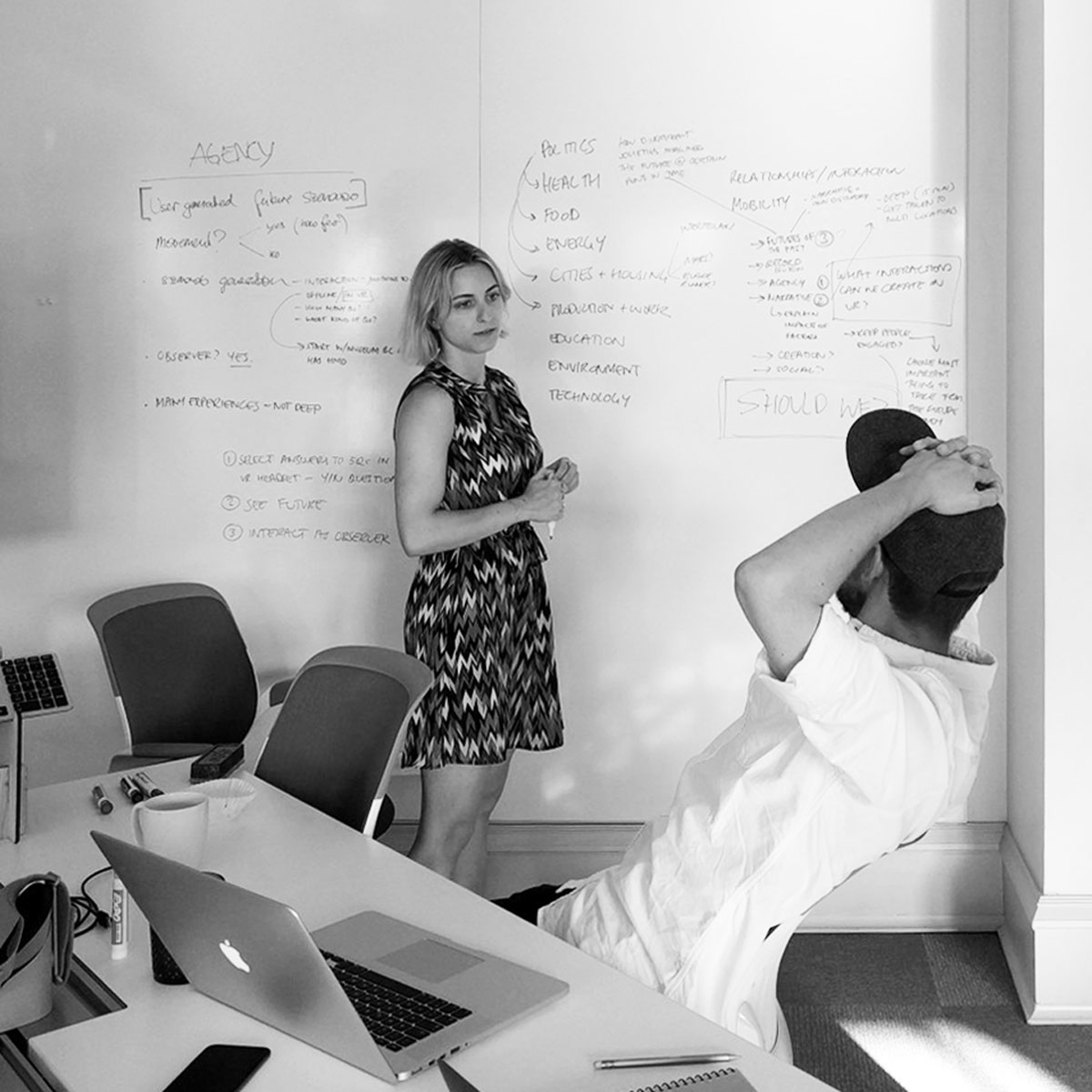

Formative Research
XF: Experiential Futures
In order to concretize our narrative and goals, we requested a mentoring session with Stuart Candy, renowned futurist and professor, who introduced us to his foresight practice, design fiction, speculative design and to the experiential futures ladder:
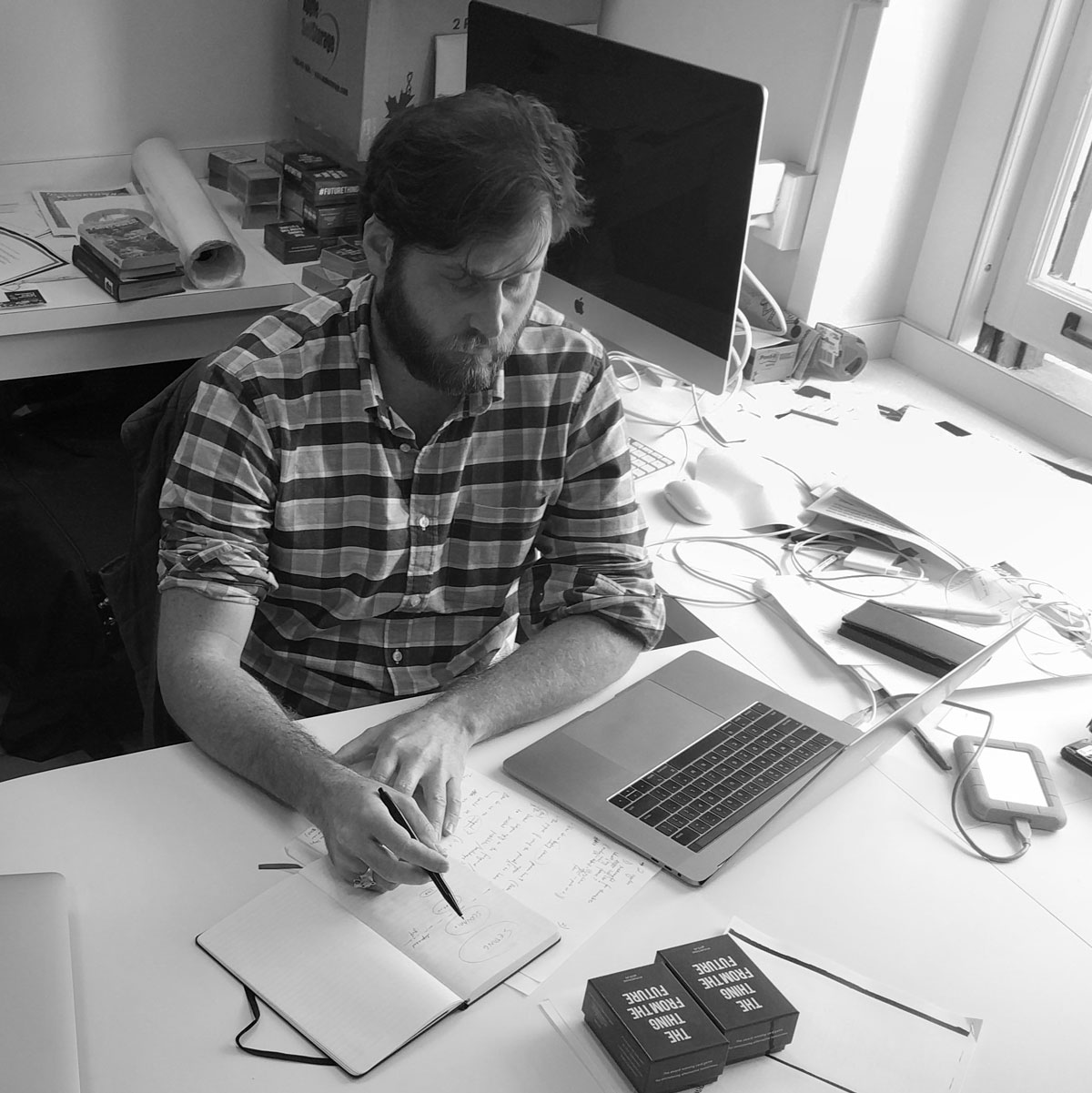

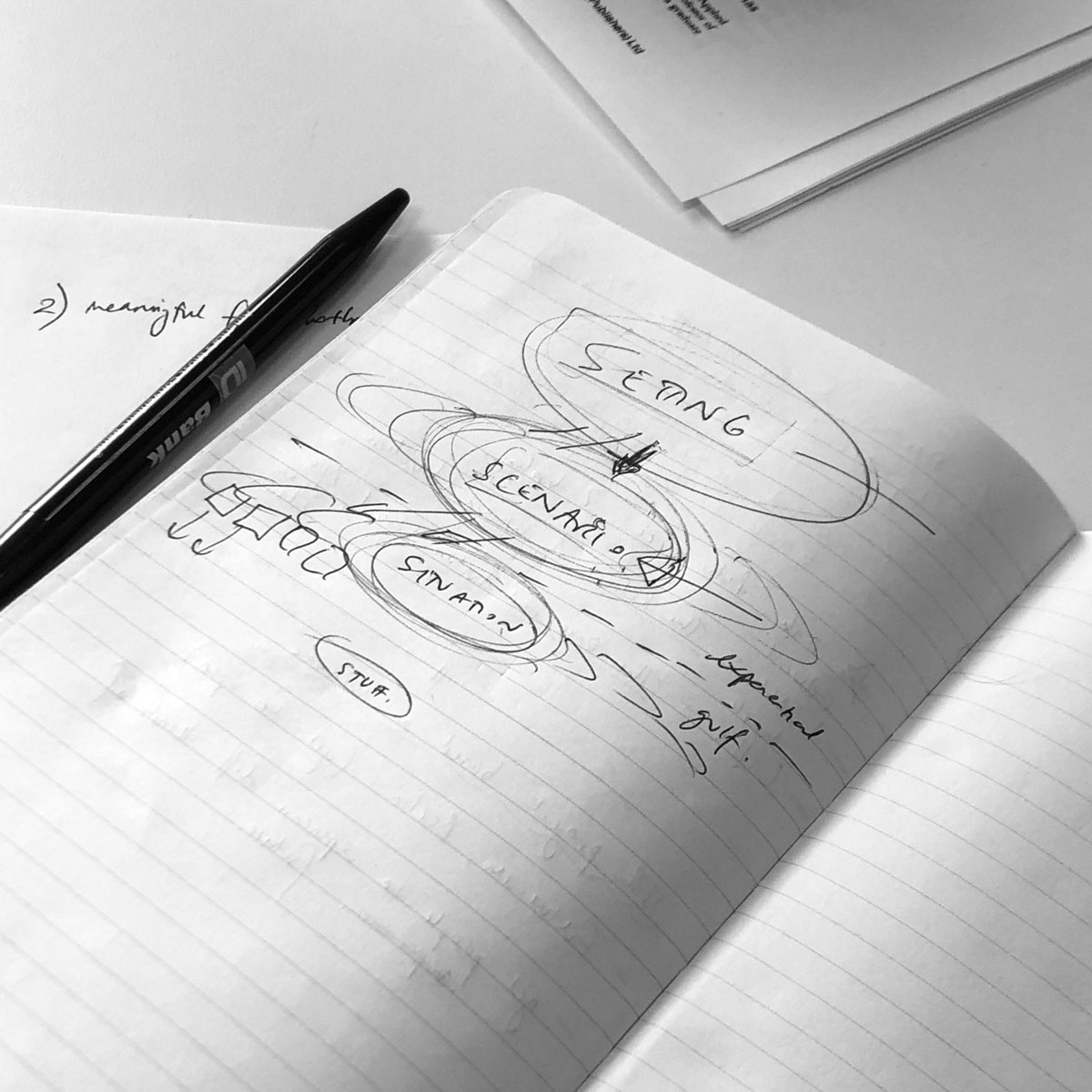



Most foresight practice remains above what Stuart calls the Experiential Threshold and rarely defines concrete future situations and specific artifacts. Here, we saw an opportunity to leverage VR in a way that would cross this line and bring the future to life by describing explicit spaces and artifacts a visitor could interact with and thus experiencing possible futures in the museum context.
We then defined our main mission:
How might we create an immersive VR museum experience to foster meaningful conversations about futures by allowing visitors to explore, experience, reflect, and discuss possible visions of tomorrow.
Concept Refinement
Finding Futures
In order to generate compelling virtual reality spaces including interactive artifacts, we needed to conduct more research. Stuart suggested we look into the foresight practice already being undertaken by institutions like the Institute for the Future and the Forum for the Future. Since our focus was crossing the experiential threshold and make futures more relatable using VR, we quickly decided to build on their research rather than generating entirely new future settings and scenarios on our own.




Building Scenarios
Our next step was to determine which scenarios we wanted to develop. We conducted a lightning decision jam to land on our main topic. Equipped with reports from IFTF and FFTF, post-its and sticky-dots for voting we landed on the Futures of Food—a topic that every visitor could relate to and that would allow us to explore many compelling futures.
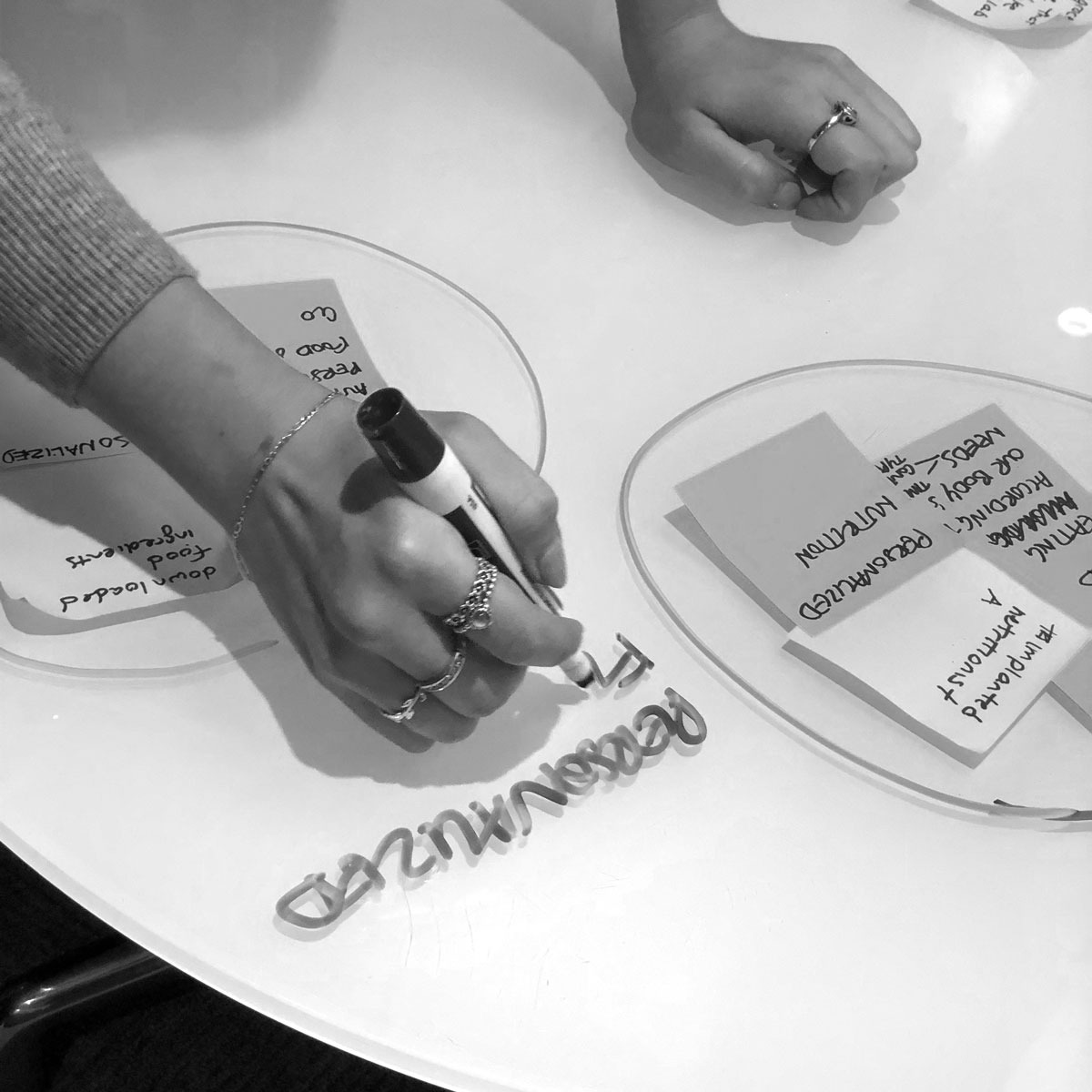

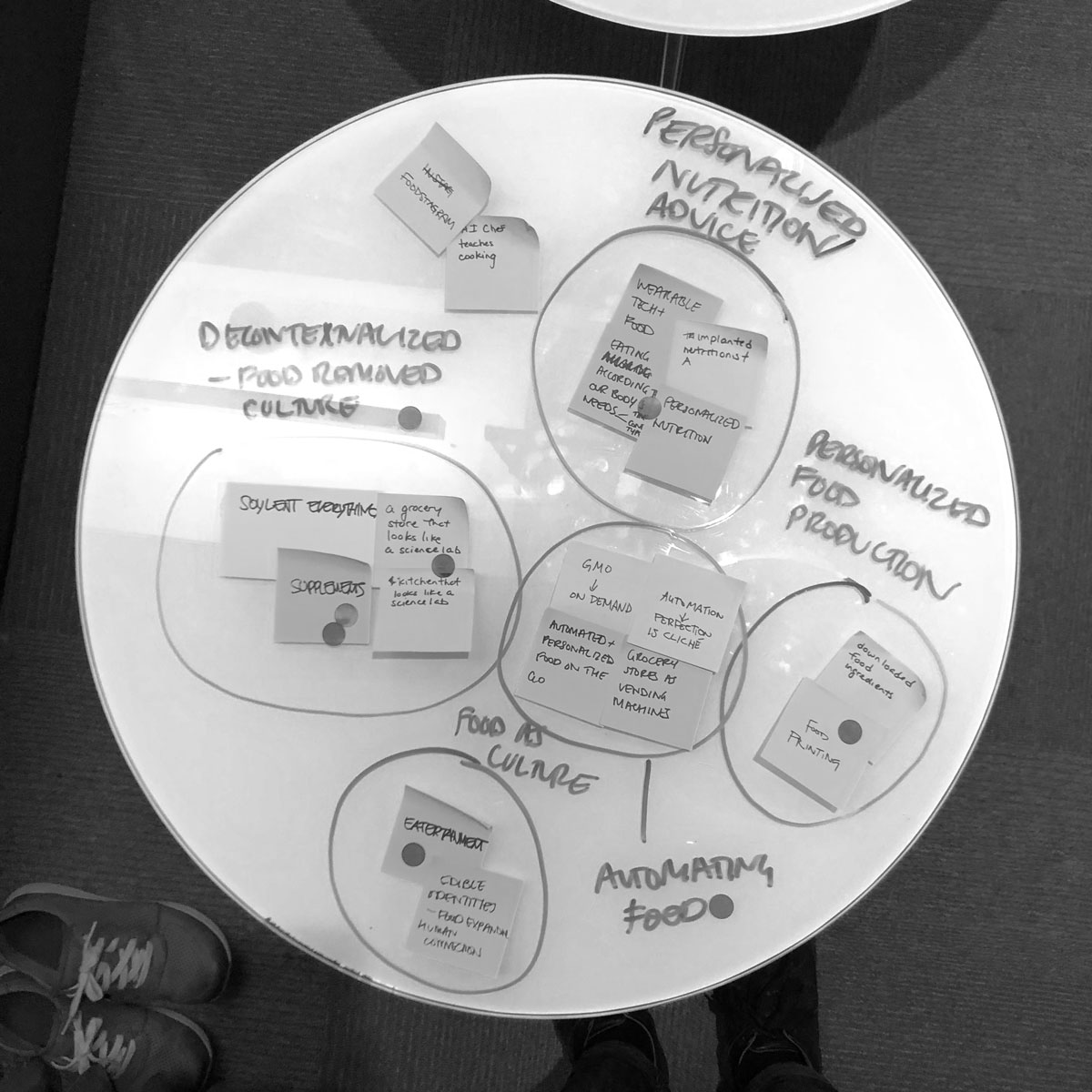

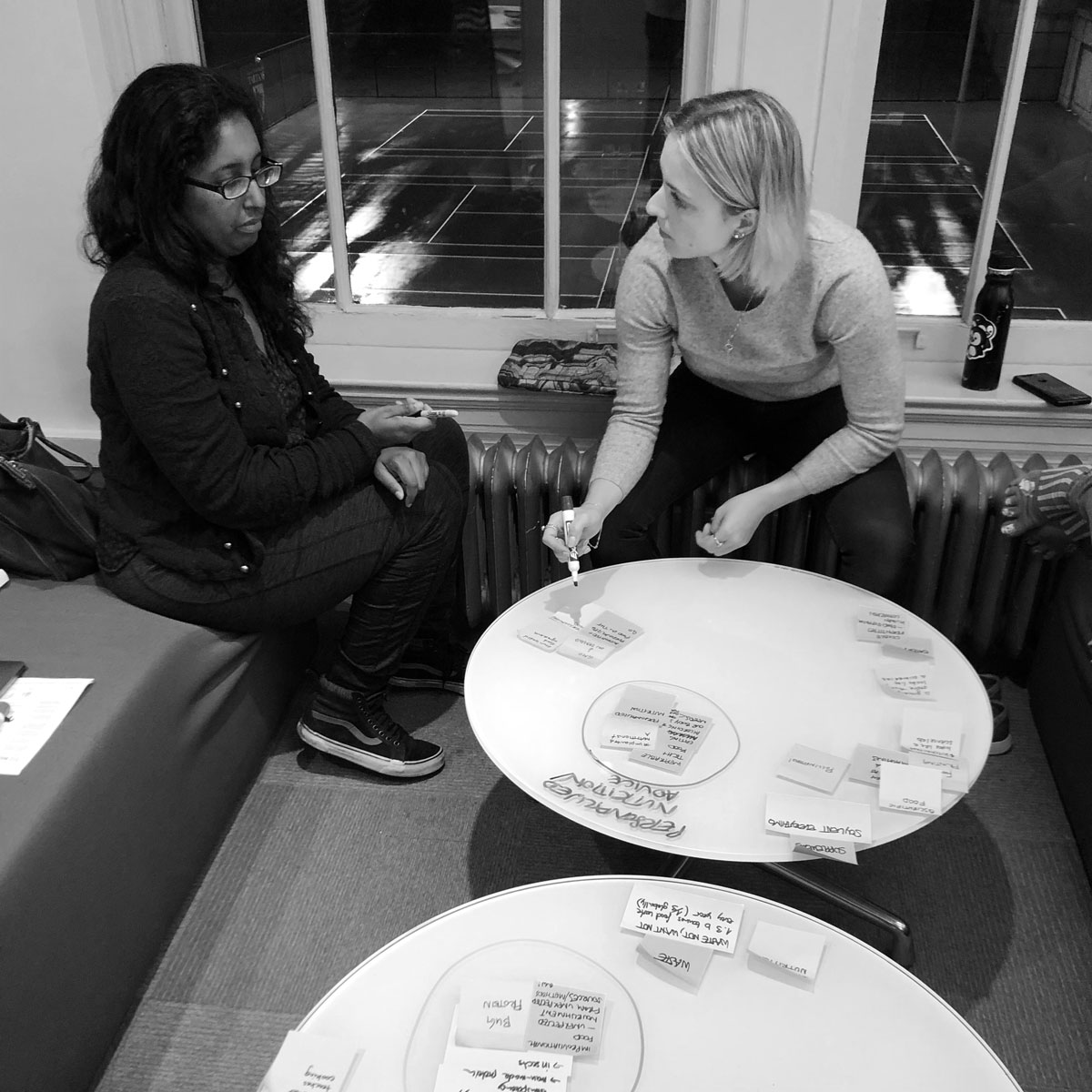

3 Unique Food Futures
We also decided on the specific future scenarios we wanted to develop, which were inspired by our foresight and trend forecasting research. Under the context of food determined three scenarios:


Post-produce kitchen
De-contextualizing Food
In a future where food has lost any resemblance to a source, what forms might it take? How might it shape the ways food and eating fit into our lifestyle?
Restaurant Automata
Automated Gastronomy
In a future where most food service is a fully automated robot based industry, how would we evaluate a culinary restaurant experience?
Clean Meat Laboratory
Clean Meat
In a future where animal protein can be synthesized ethically, what might we then be able to eat? How would our relationships with animals and nature change?
Interaction Flow
The Lobby
Upon putting on the VR headset the visitor is presented with an introduction of the VR exhibition and completes an on-boarding process in form of a short tutorial to familiarize themselves with the key interaction paradigm. The visitor can then chose the future they want to experience by hovering over floating cards in front of them, reading a short description and clicking to confirm their selection.
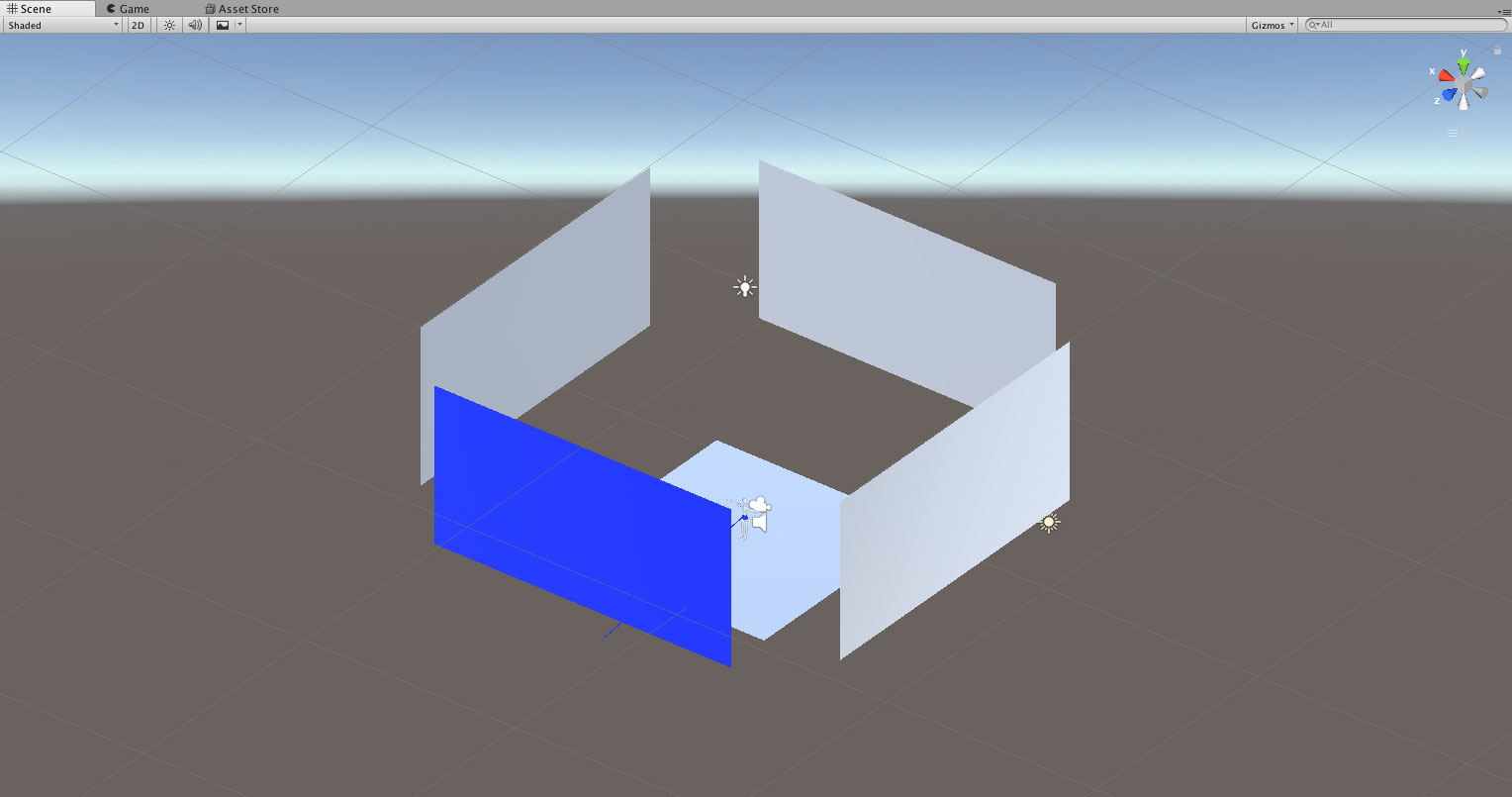

Test in Unity
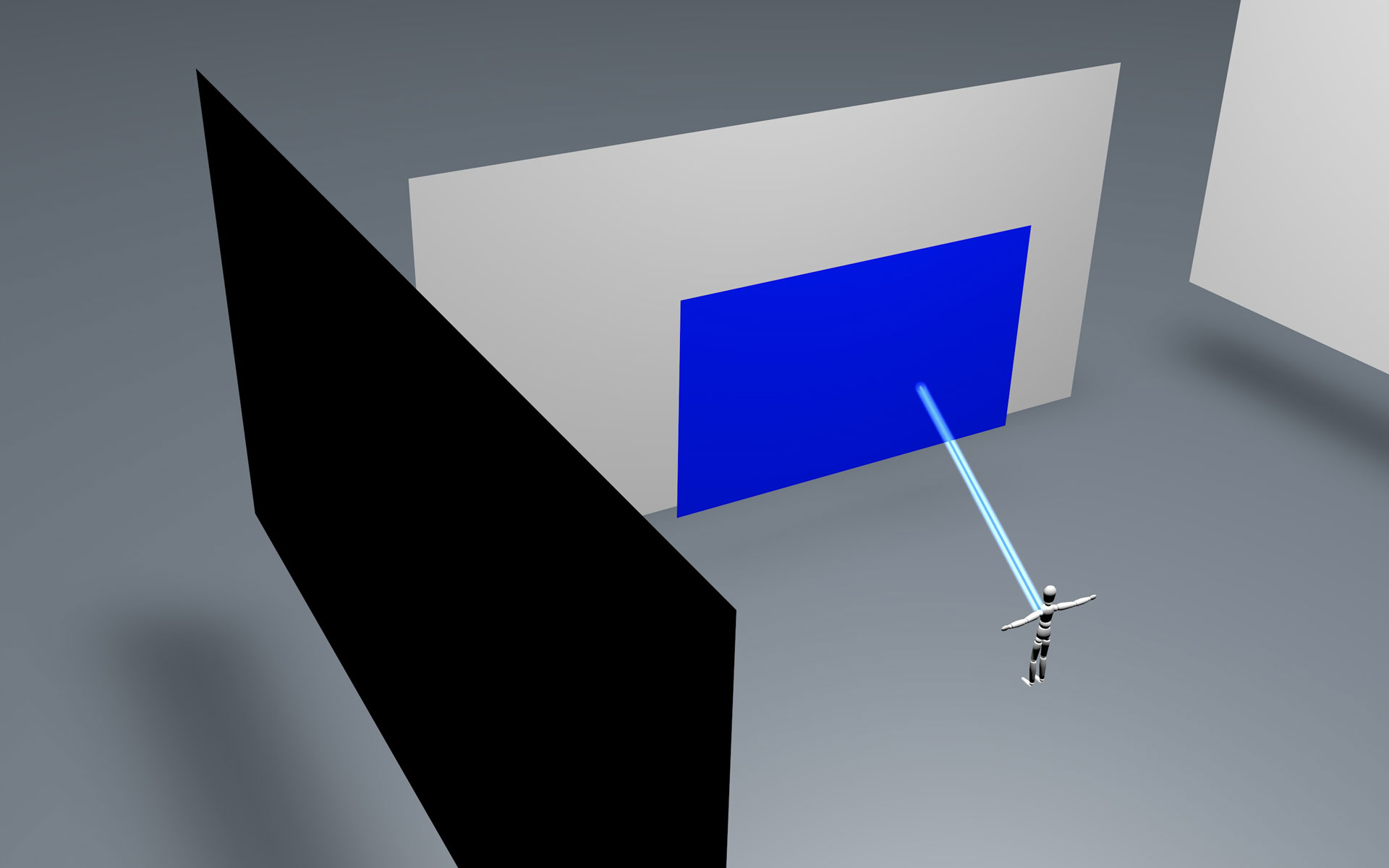

Test in Cinema 4D
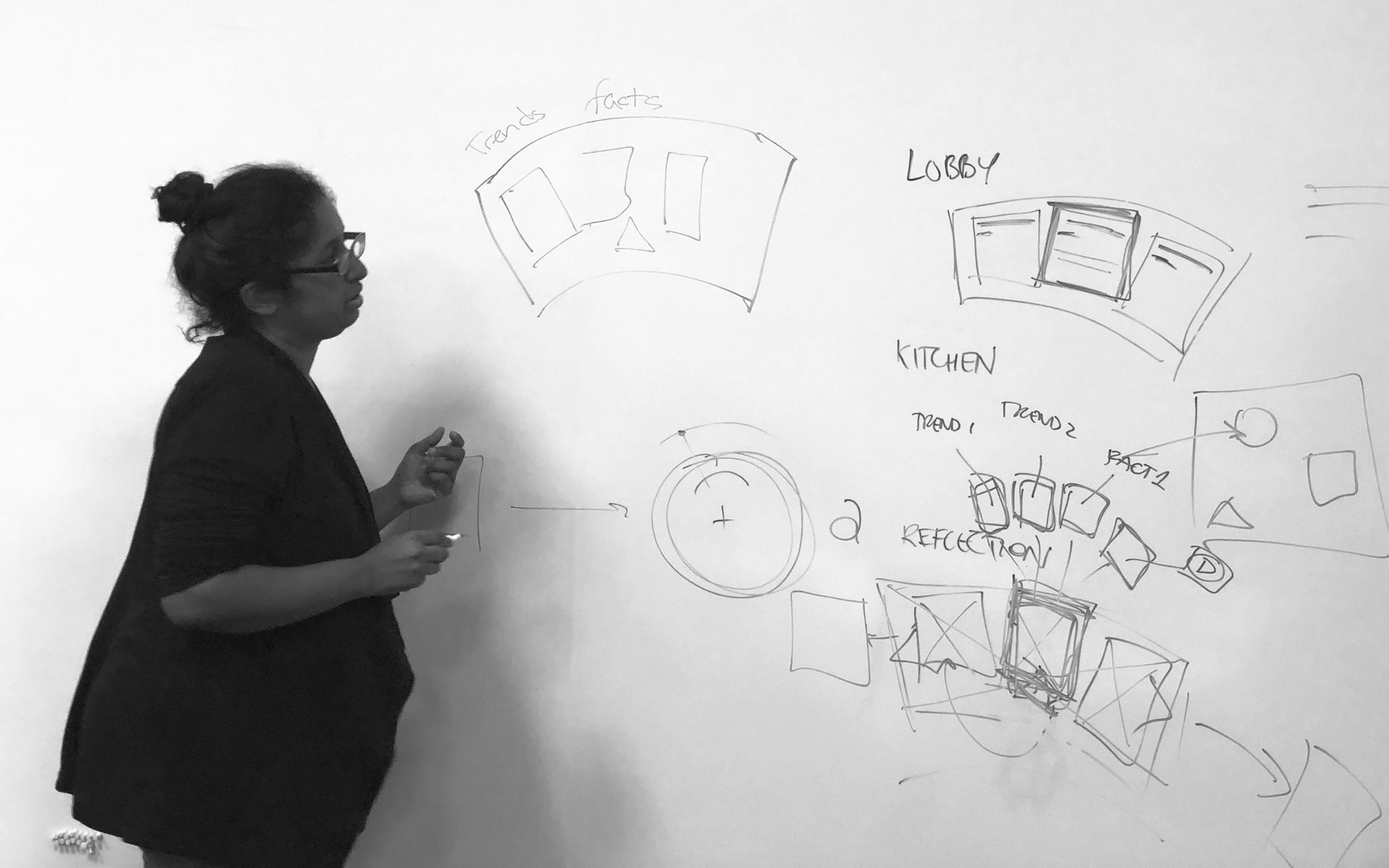

Whiteboarding ideas for the interaction flow and logic
Lobby wireframe
Lobby After Effects prototype
The Post-Produce Kitchen
In order to convey our concept, we decided to build out one future scenario in its entirety. This allowed us to explore a breadth of interactions, utilizing multiple senses. Some are discoverable with a cursor, and others are spontaneous. We visualized our post-produce kitchen scenario in a simple projection which we could then load into a spherical 360° viewer. We then developed a wireframe and defined key interactions. Finally, we prototyped the VR environment using Cinema 4D and After Effects.
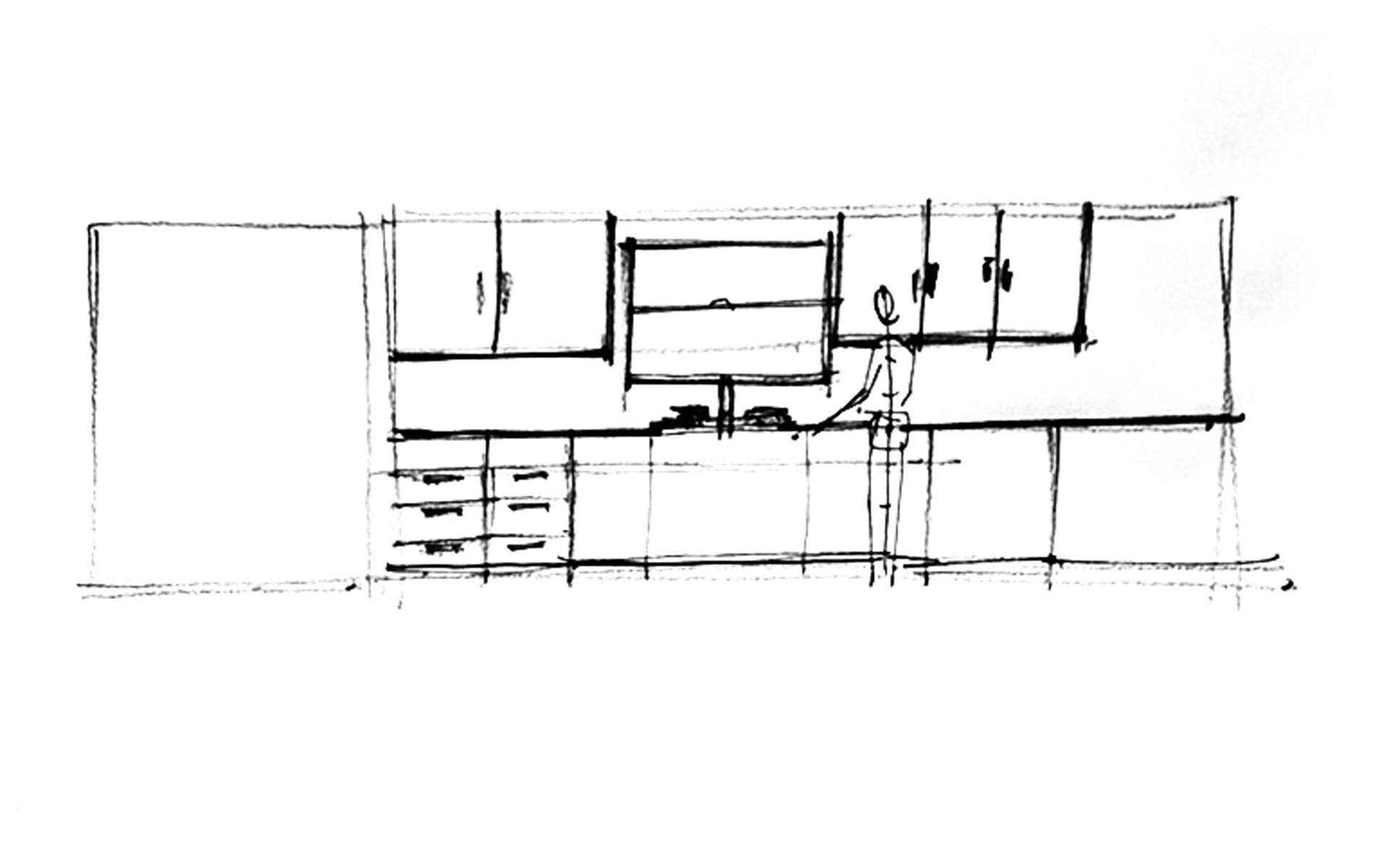

Kitchen front view
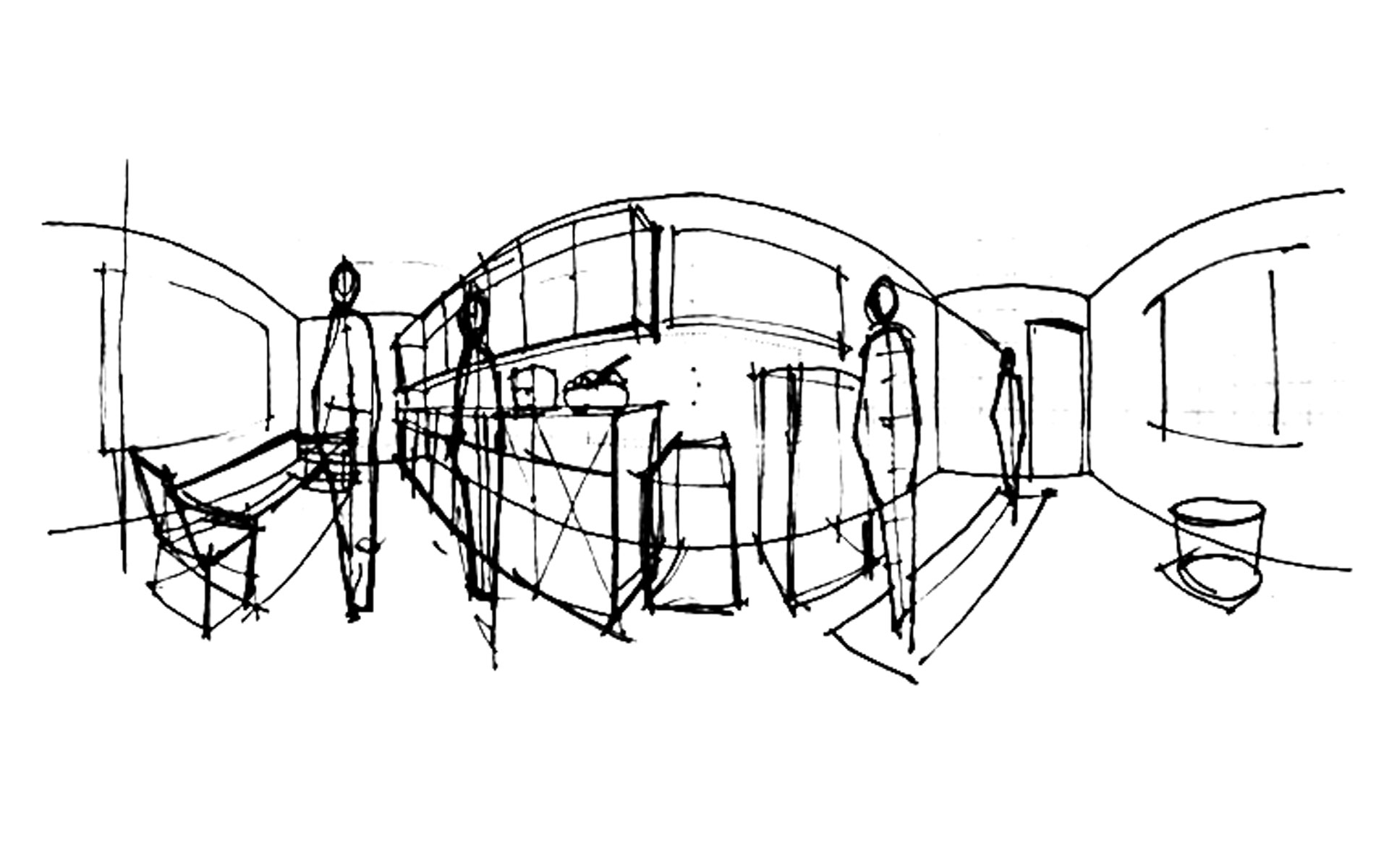

Spherical kitchen projection
Kitchen wireframe
Mid-Fi Cinema 4D prototype
Kitchen Cinema 4D prototype
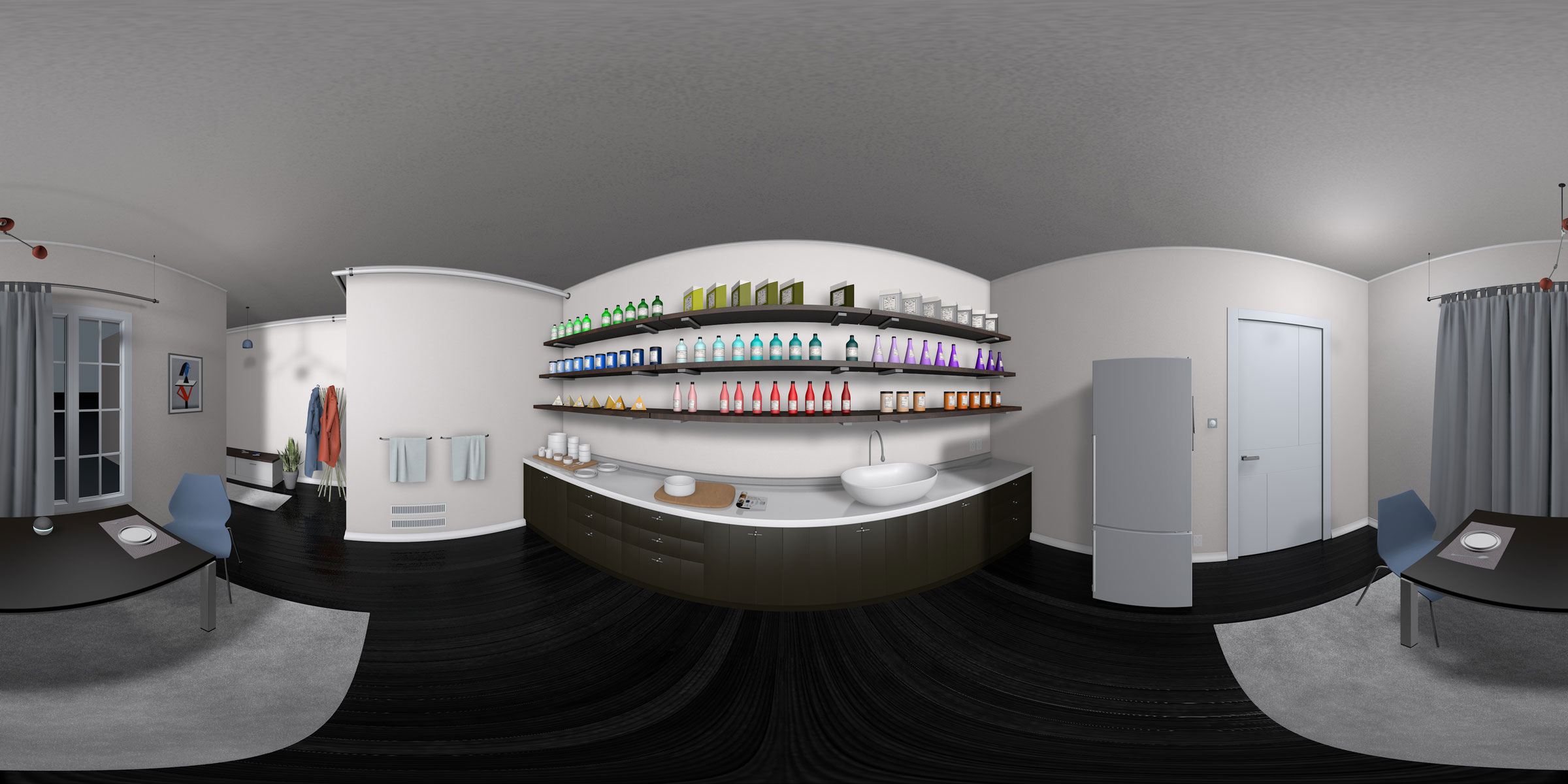

360° environment
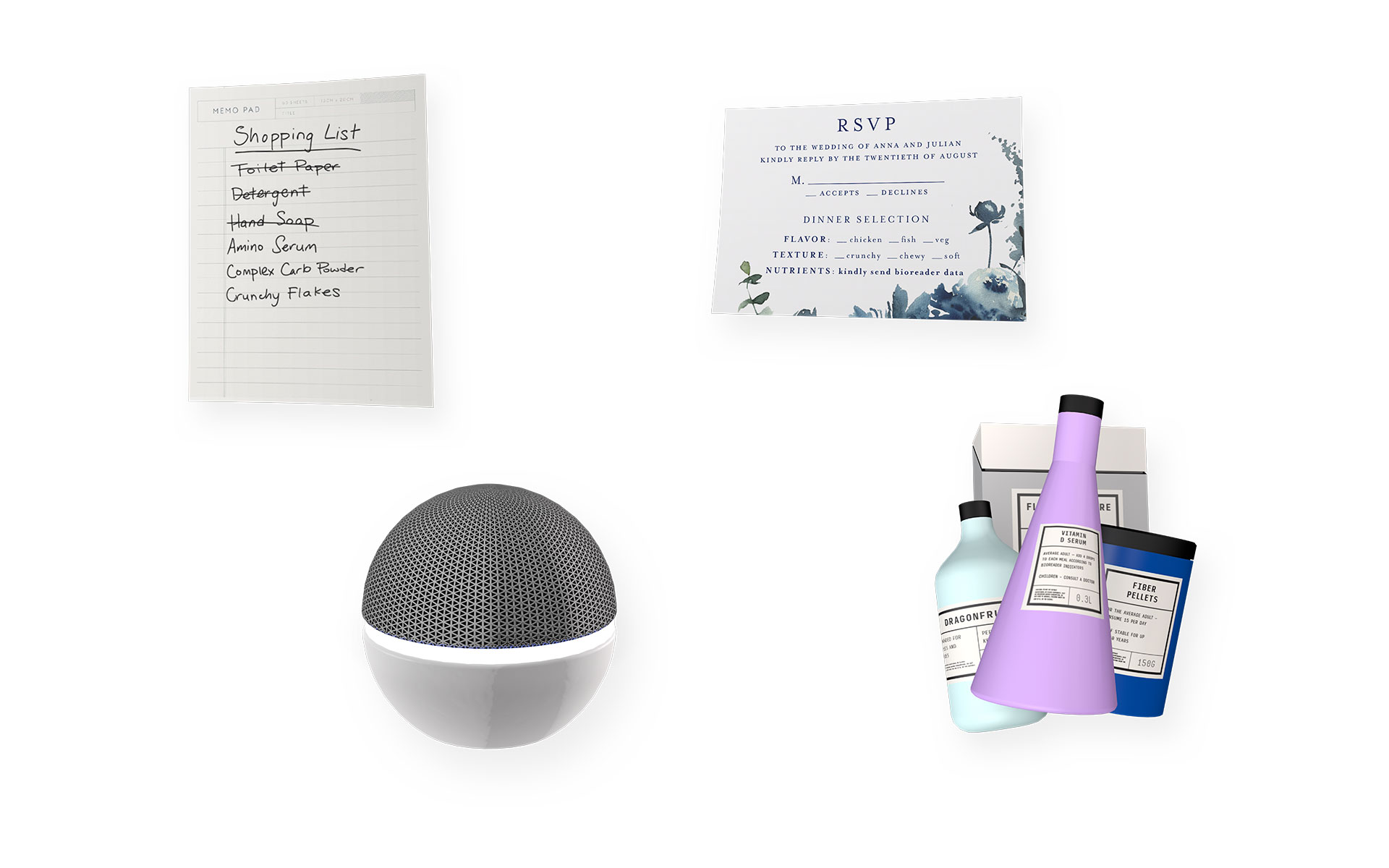

Selection of interactive artifacts: shopping list, home assistant, wedding RSVP, decontextualized food
Technology and Oculus Go Constraints
The Oculus Go’s technological constraints greatly limited the possibilities we had as designers to develop our concept for VR. Trying to overcome these challenges, however, presented an interesting design problem. We relied on the pointer’s available controls to move through space in addition to facilitating interactions with the environment. In the end, this was perhaps most appropriate for an in-museum experience, where visitors are likely to be unfamiliar with the interface.
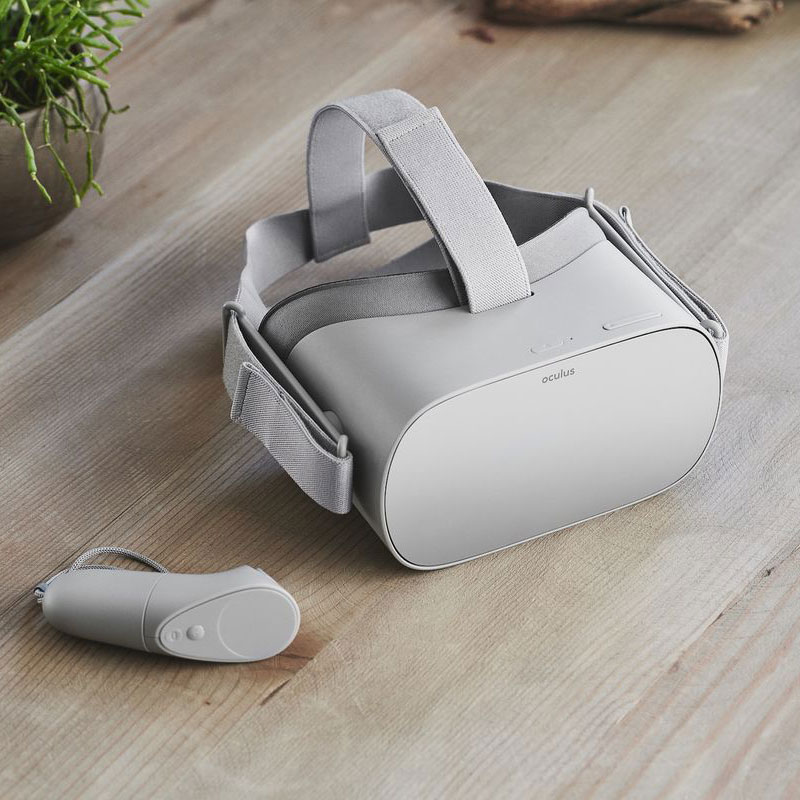

Oculus Go headset
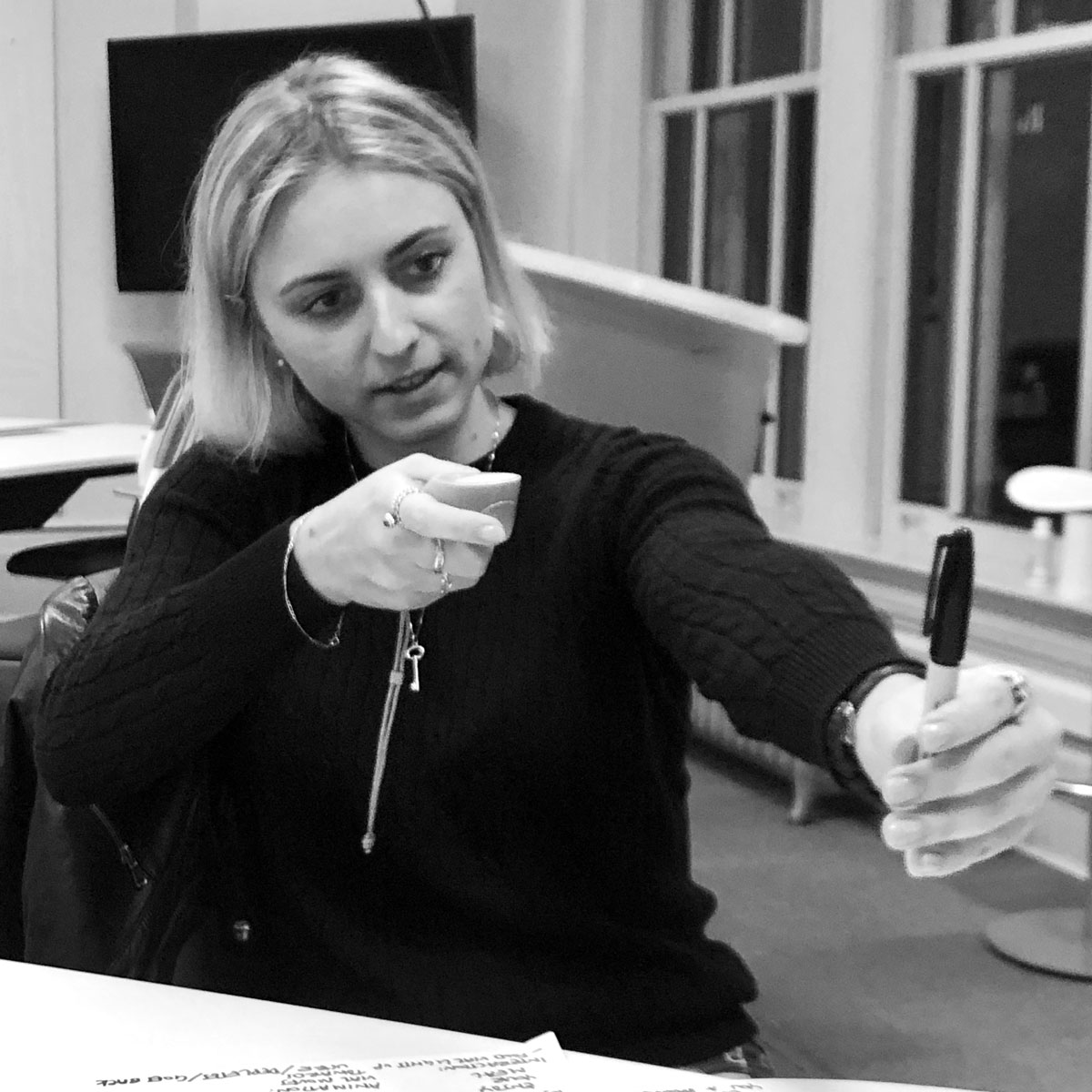

Ema with controller
Only 3 degrees of freedom (yaw, pitch, roll)
Controller and Pointer
The pointer switches between four distinct states. Since we designed the VR experience to be exploratory and non-linear, we had to design two states for interacting with the environment: one for the primary interactions that inform the narrative and one for all the other secondary interactions.
Pointer default
Interaction indicator
Key interaction indicator
Click state

